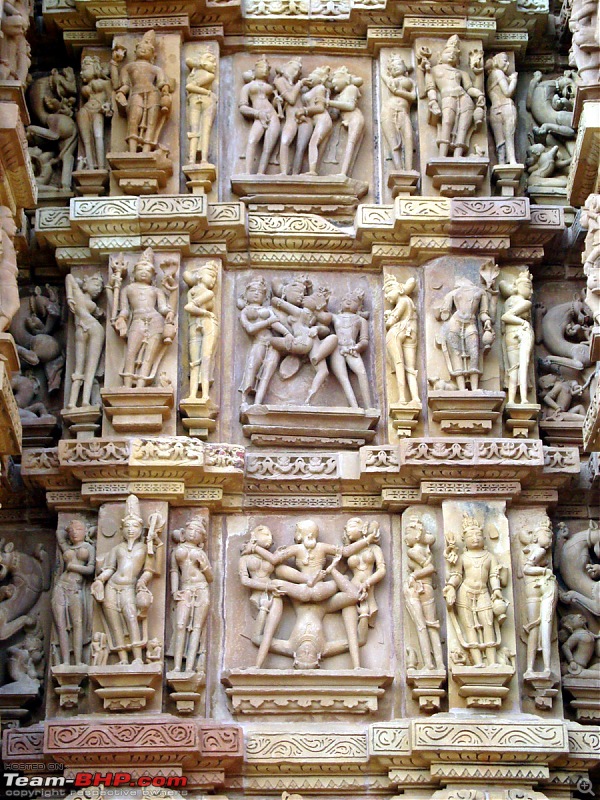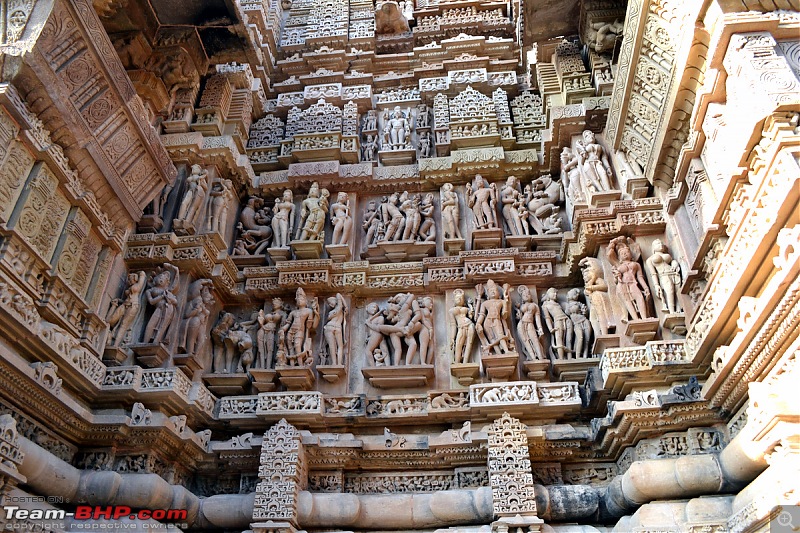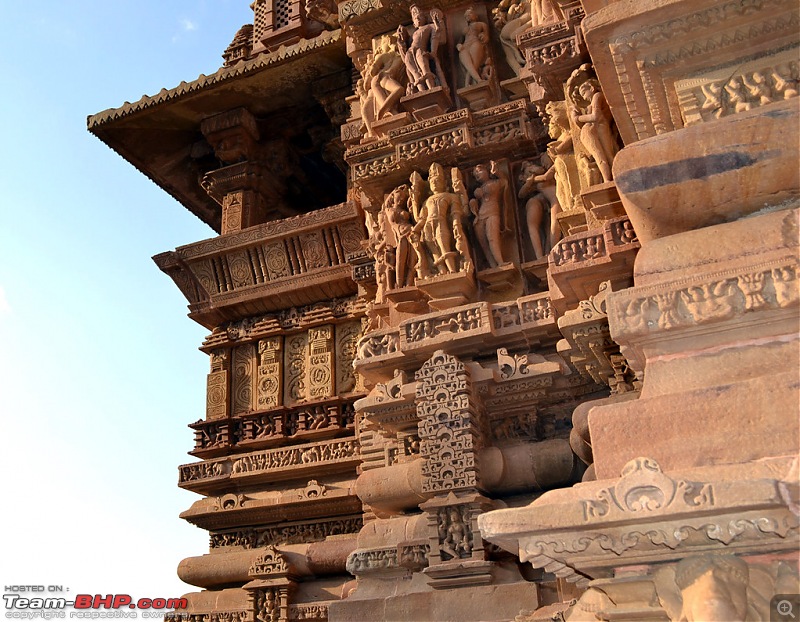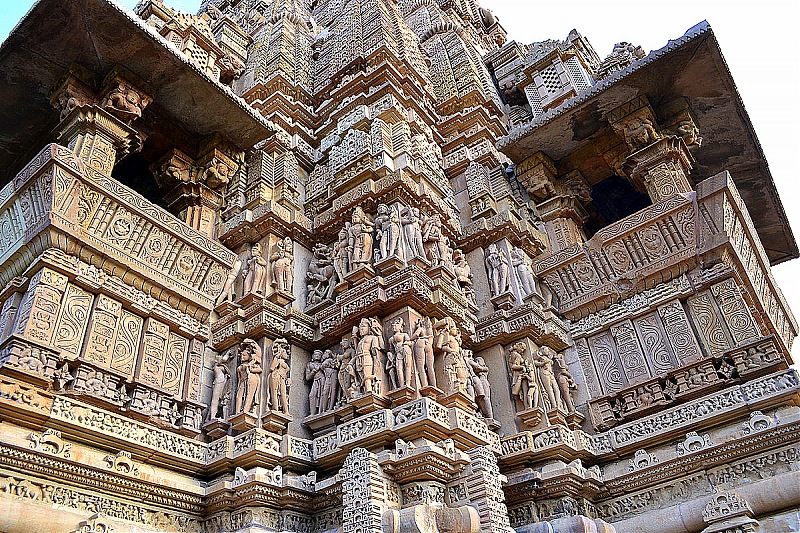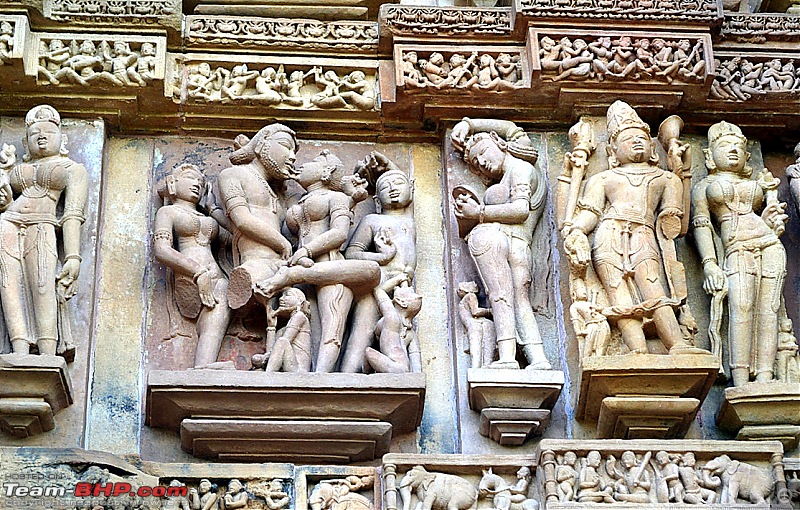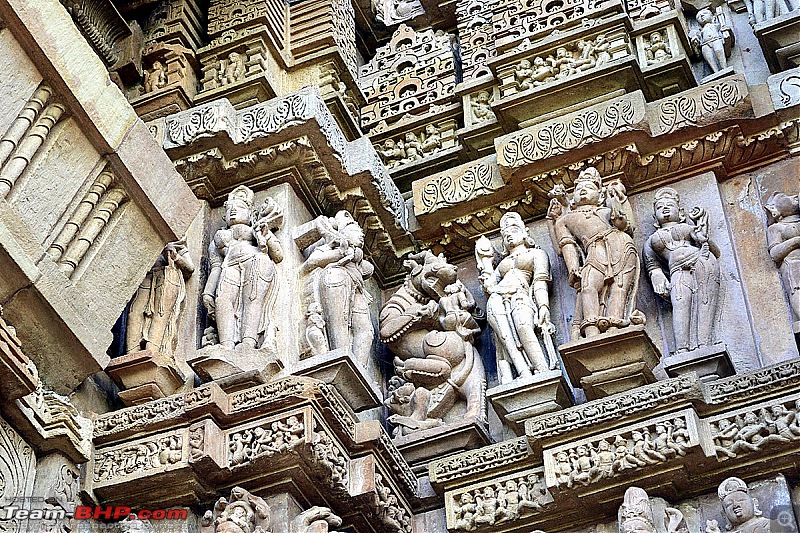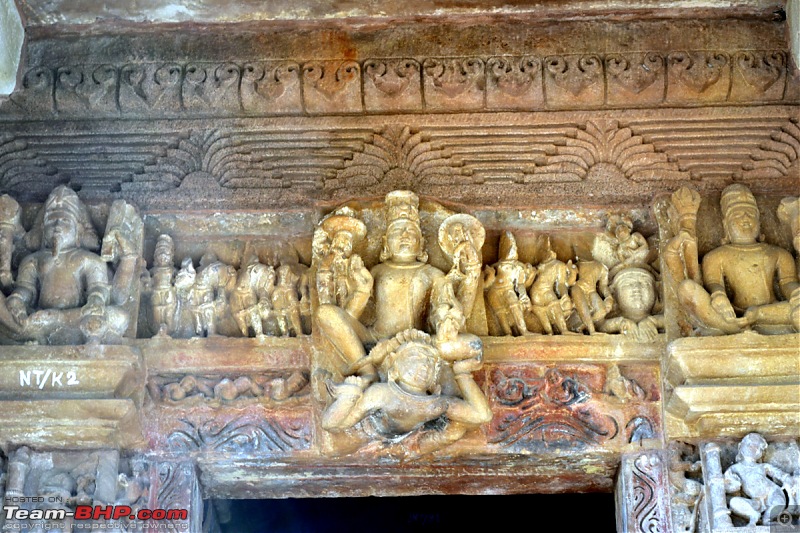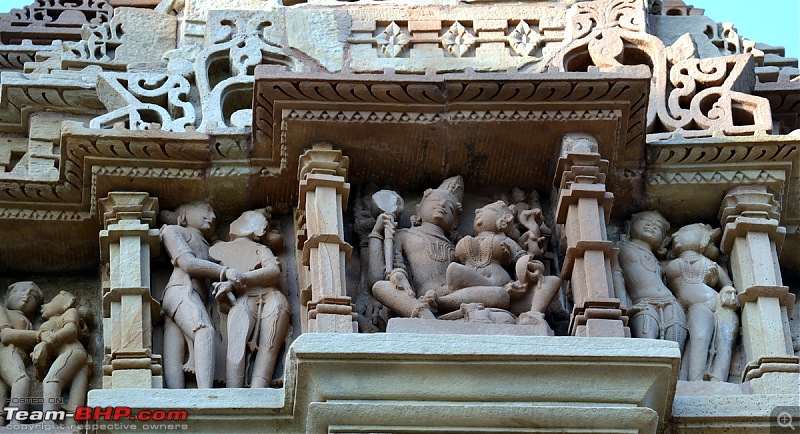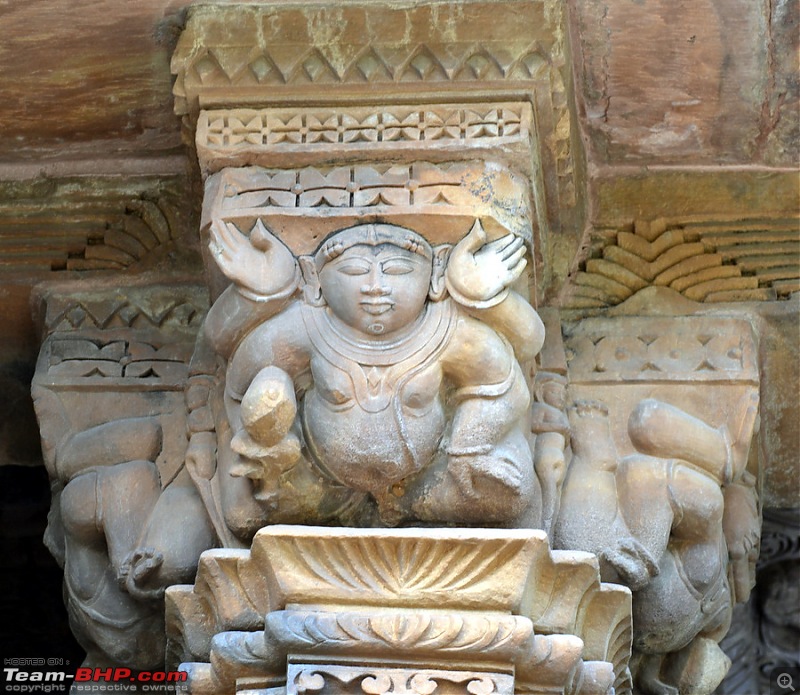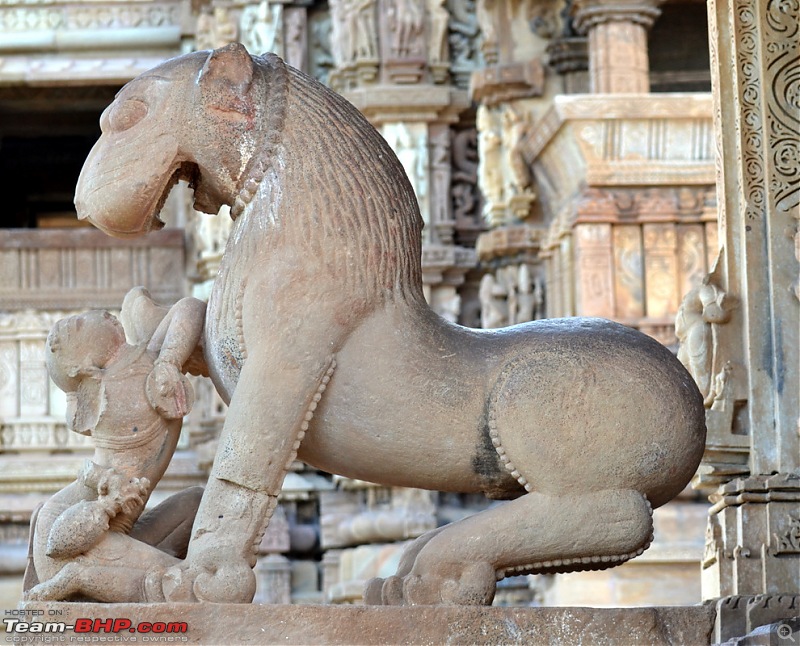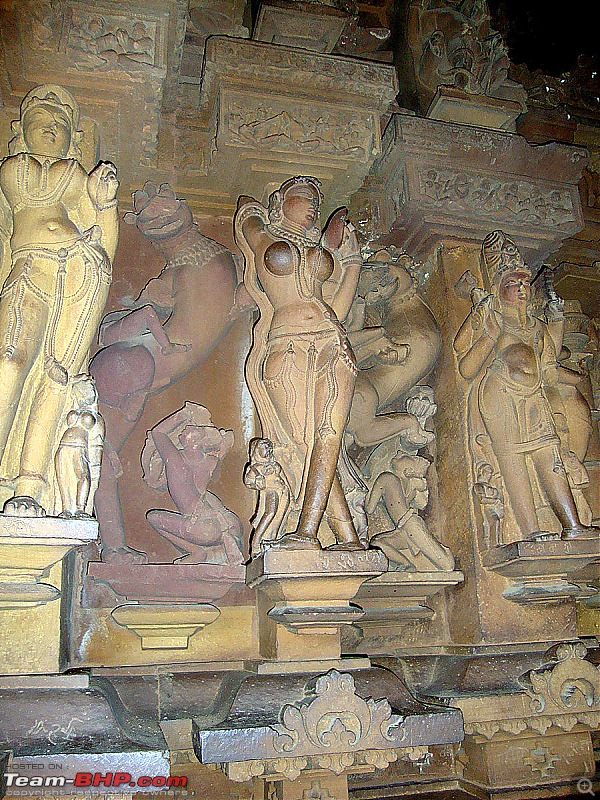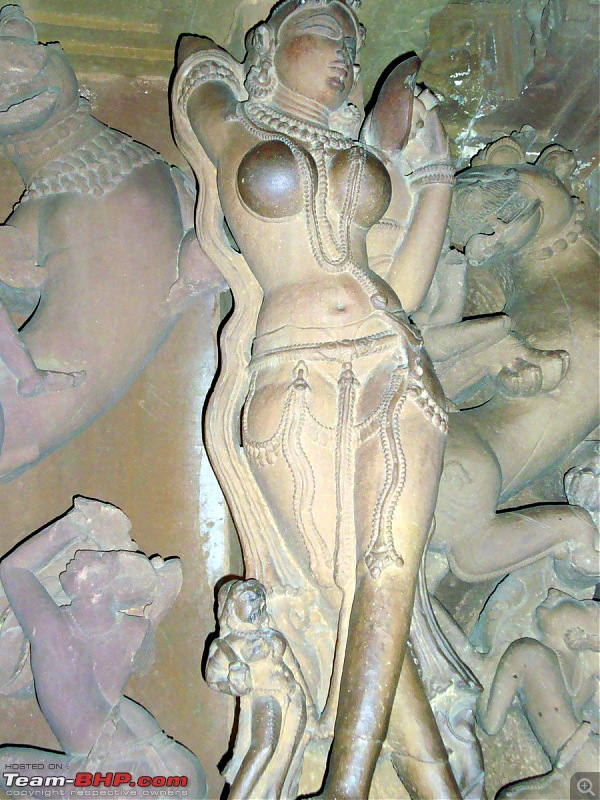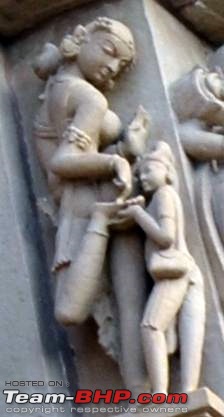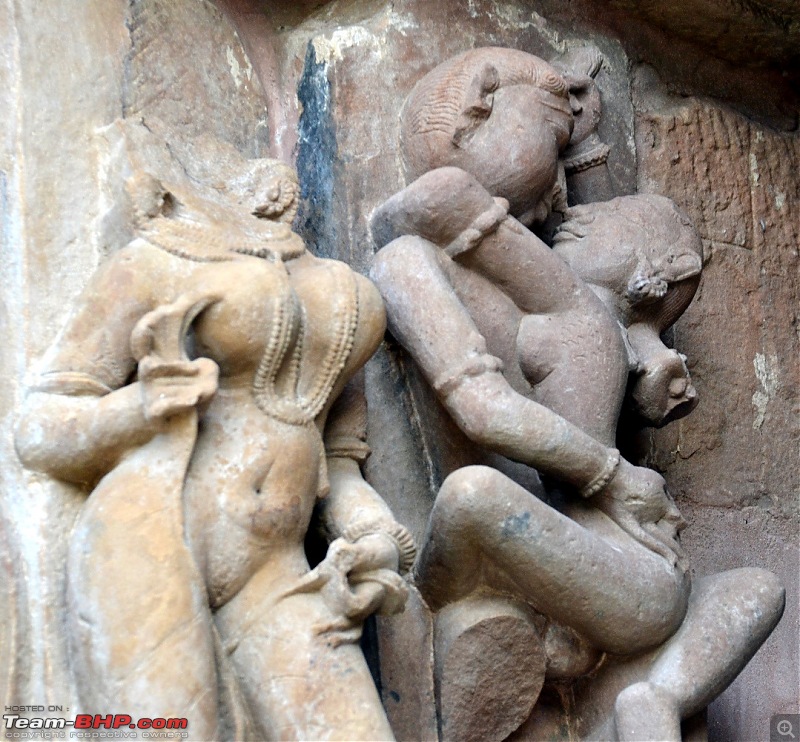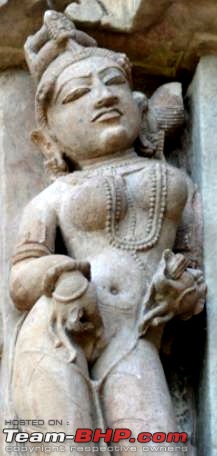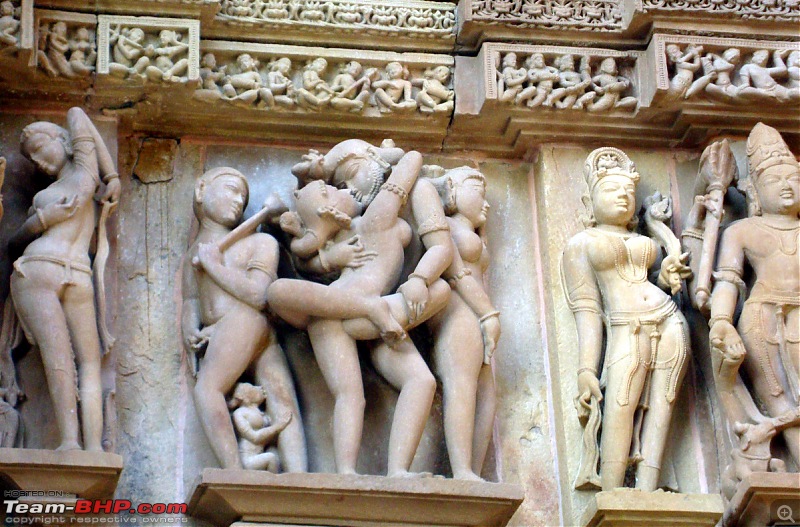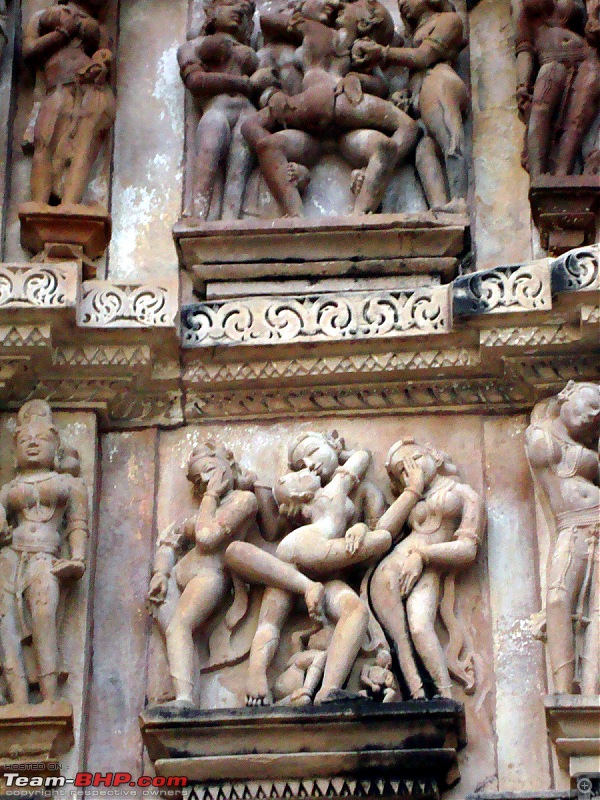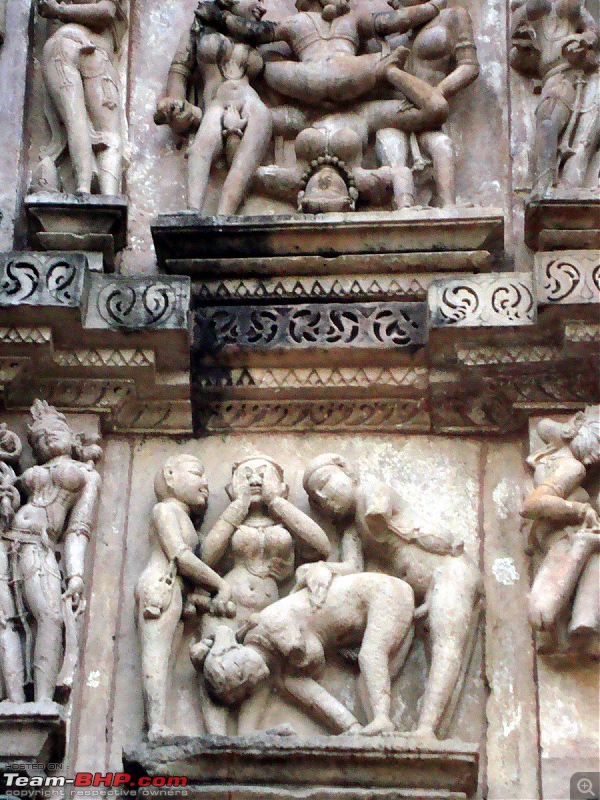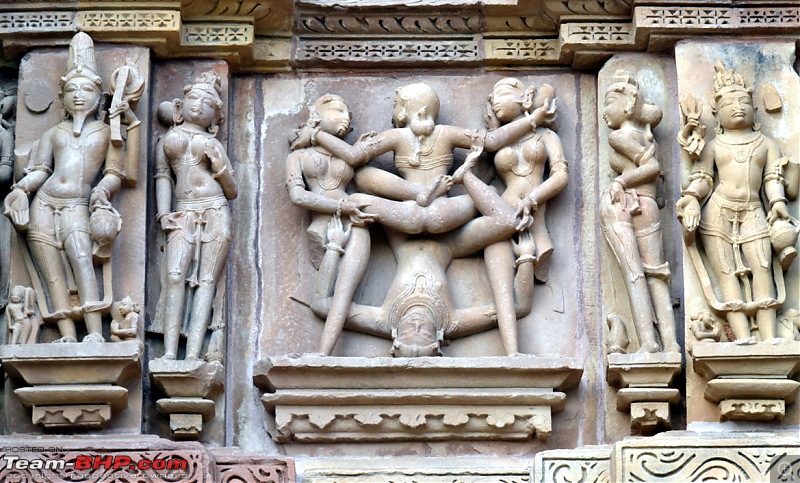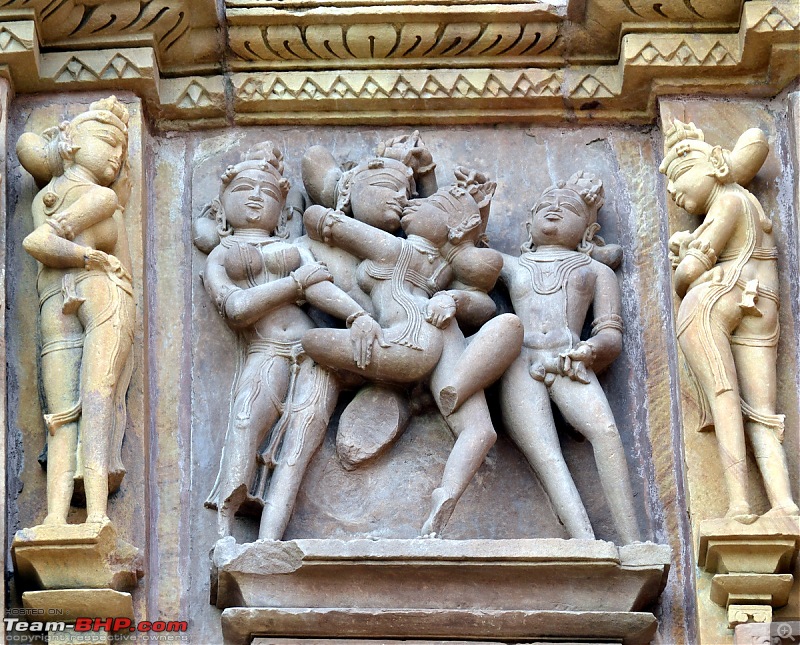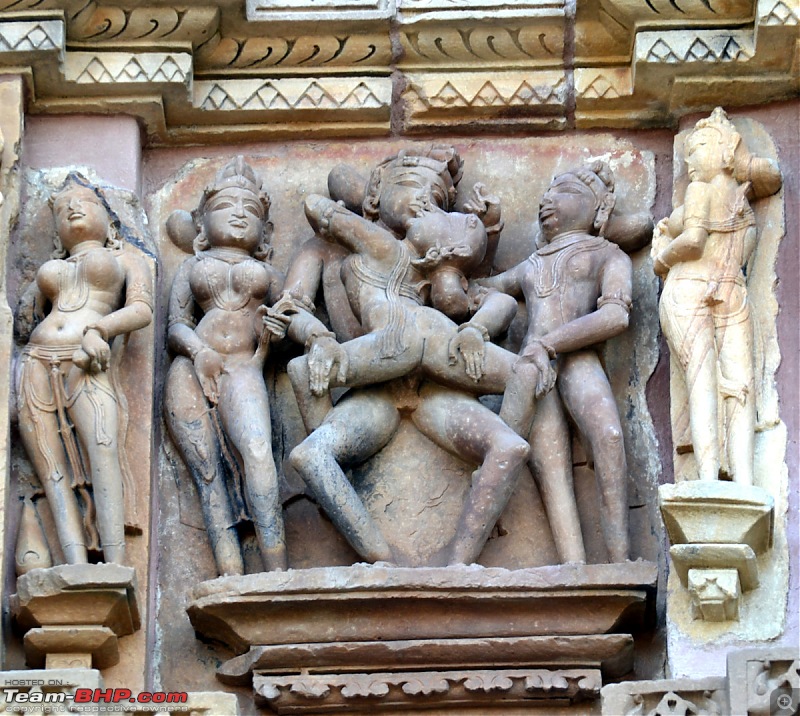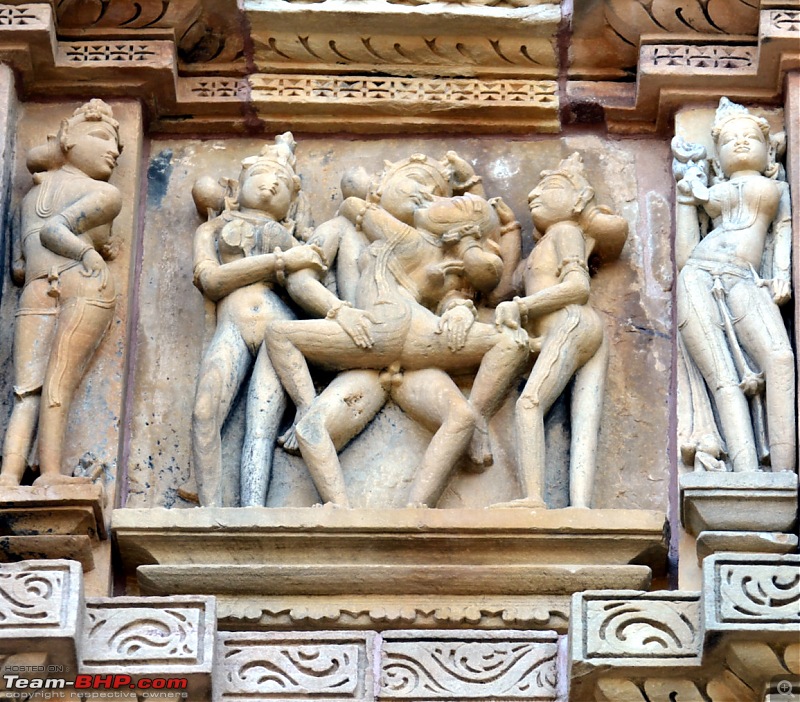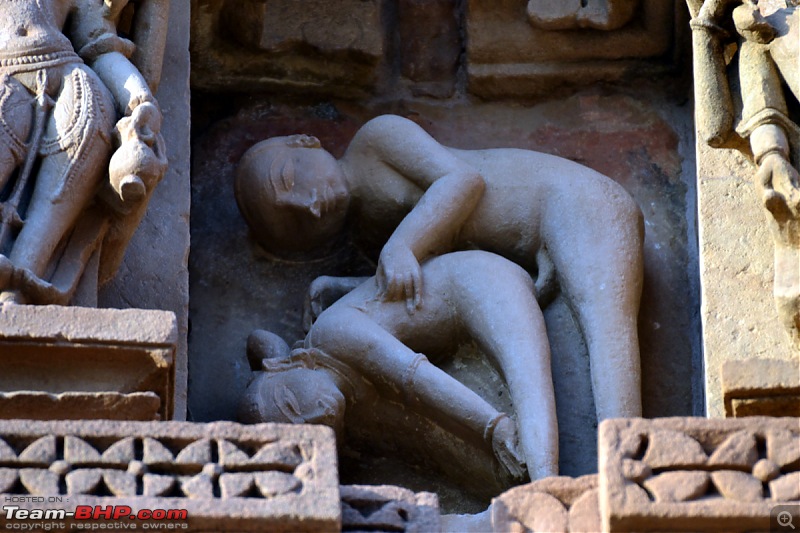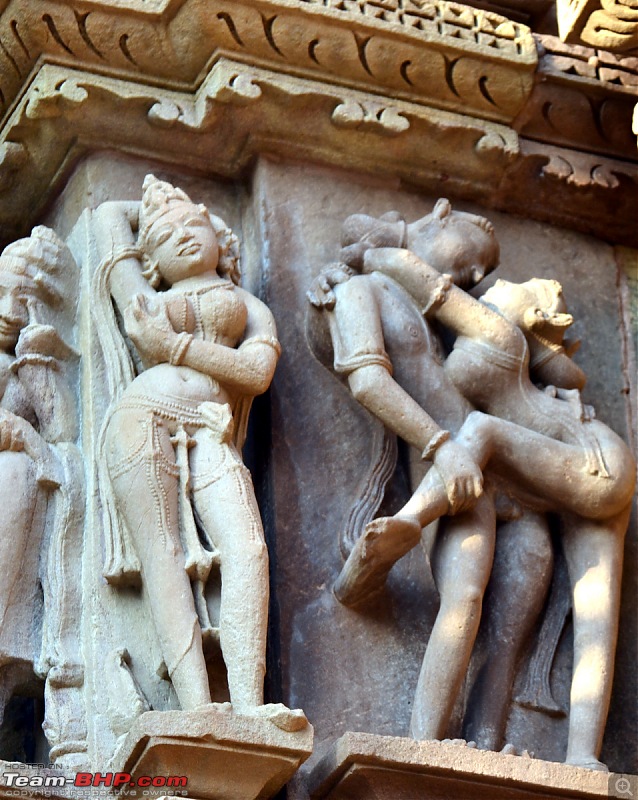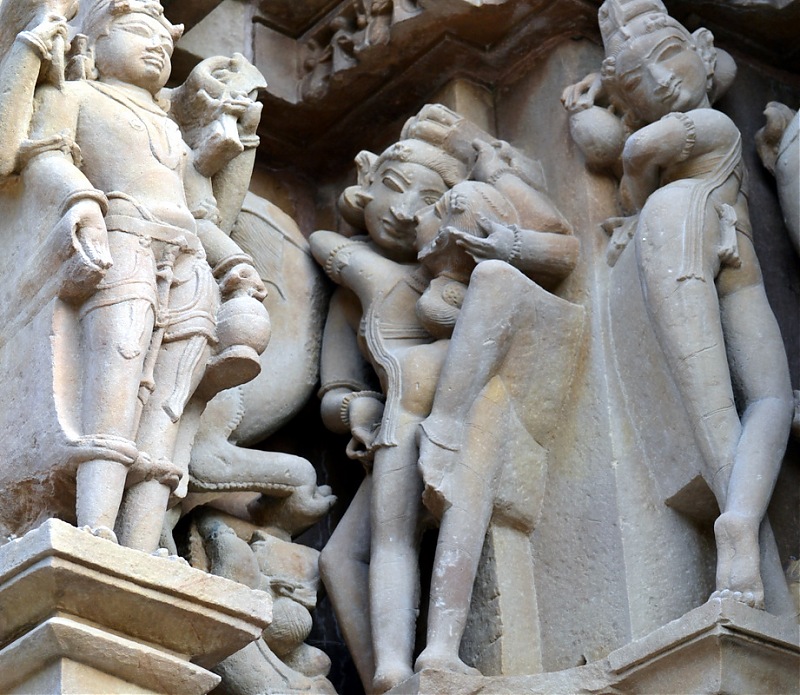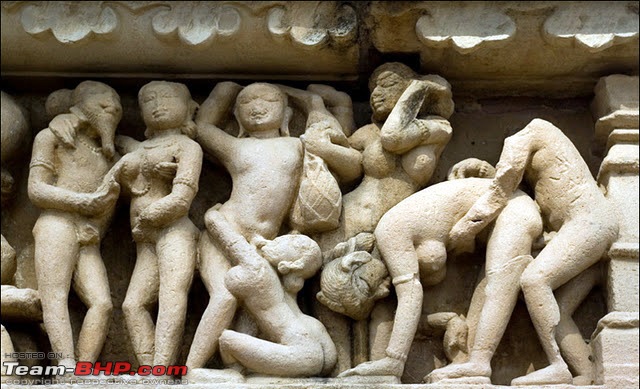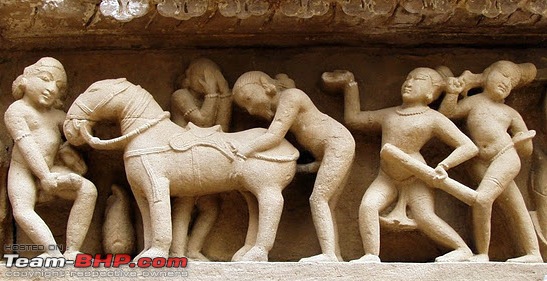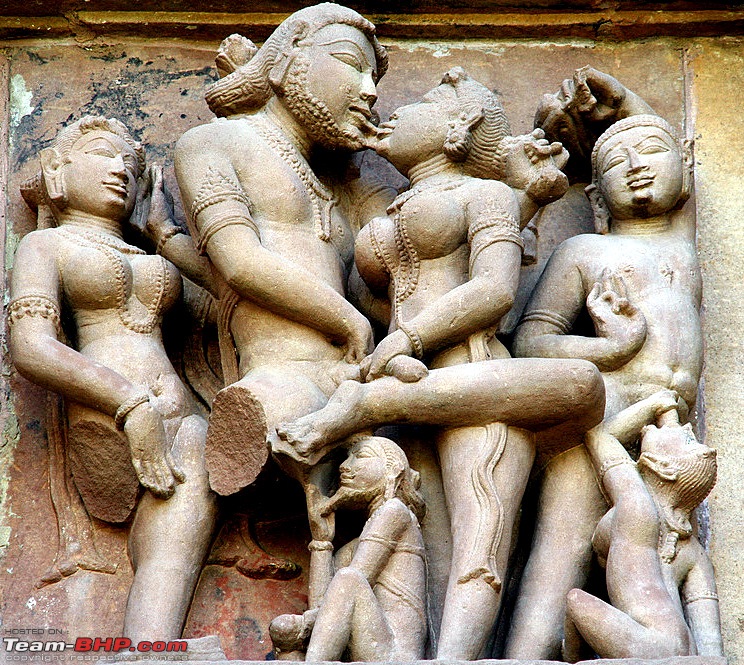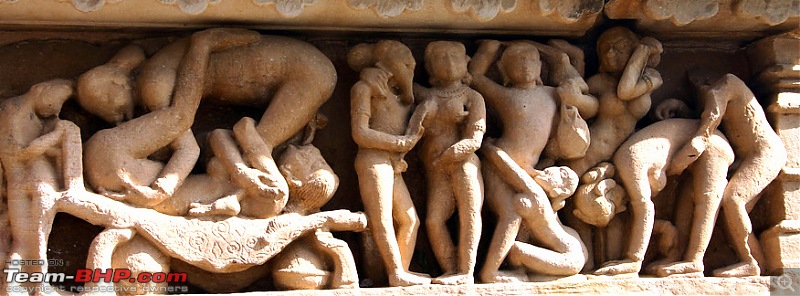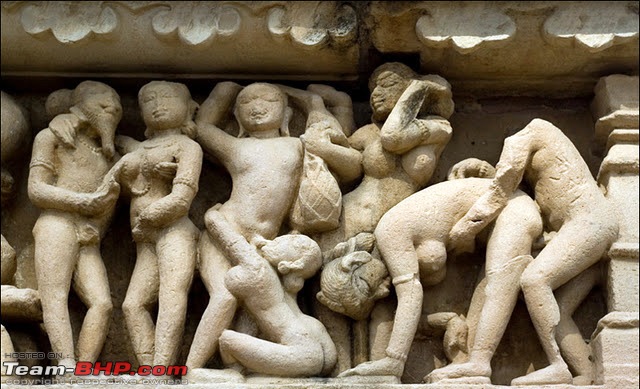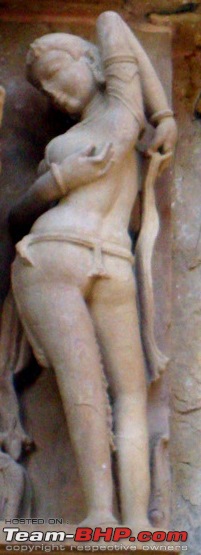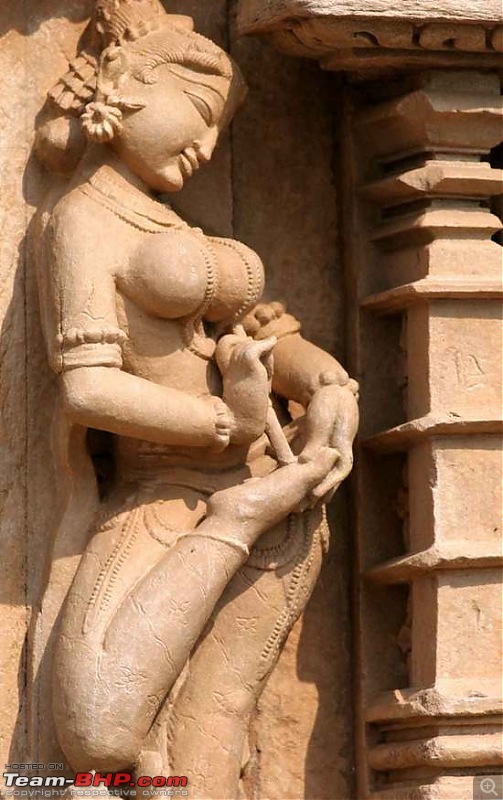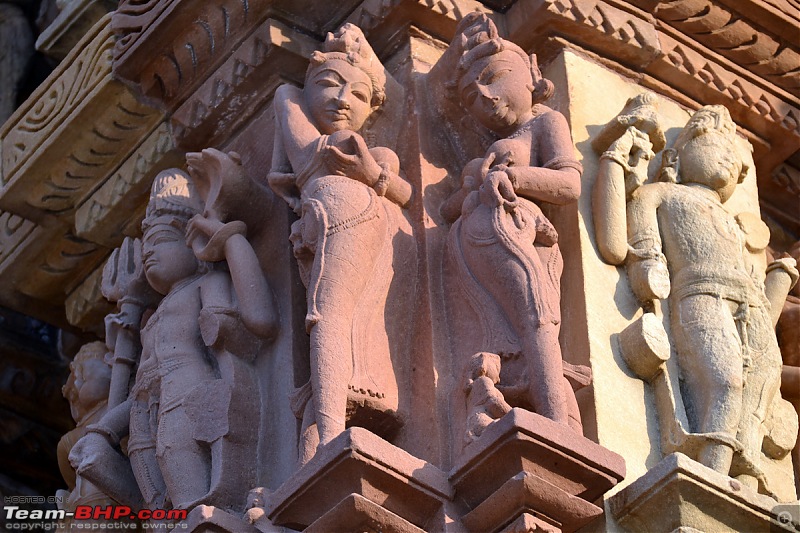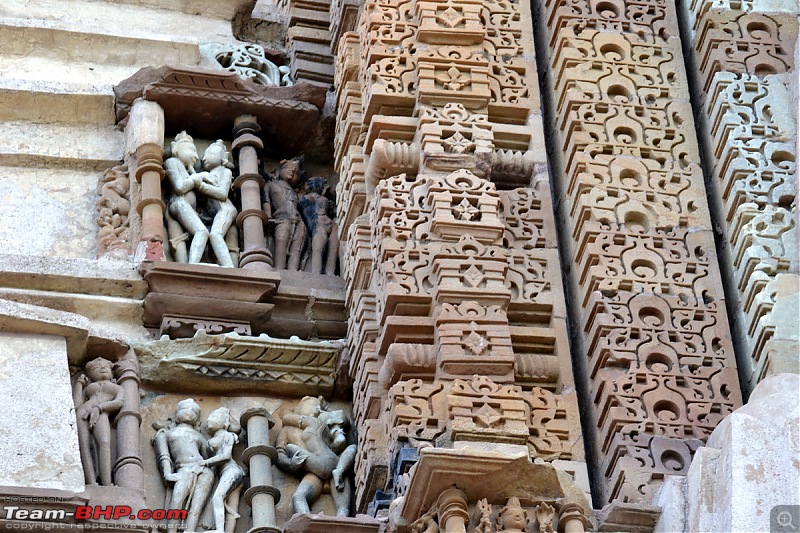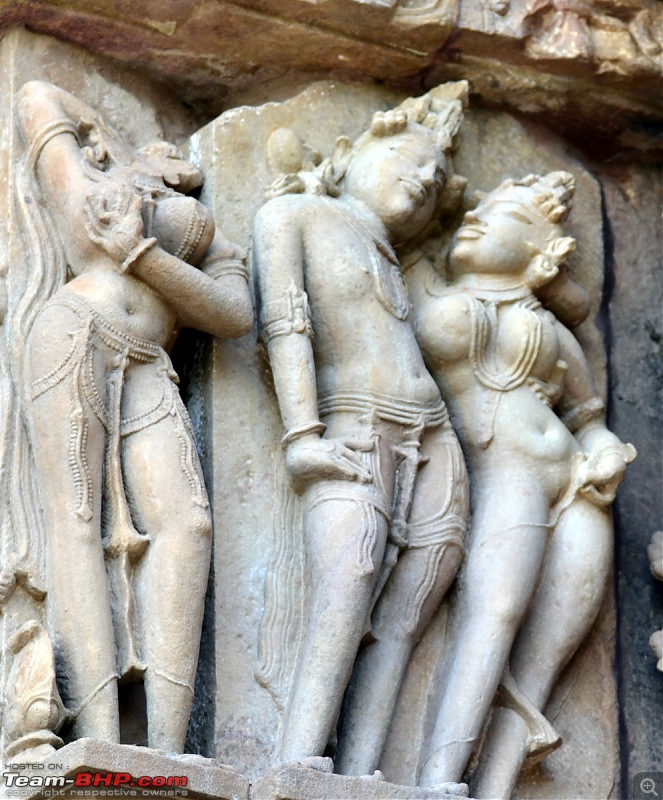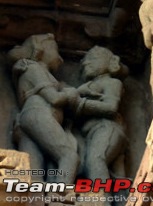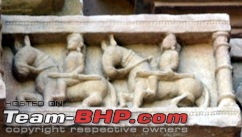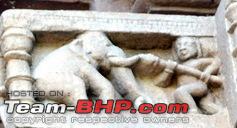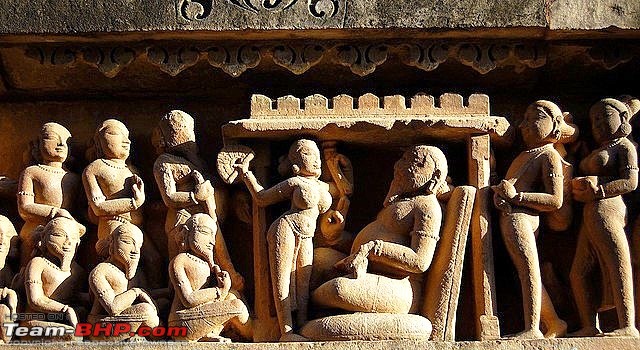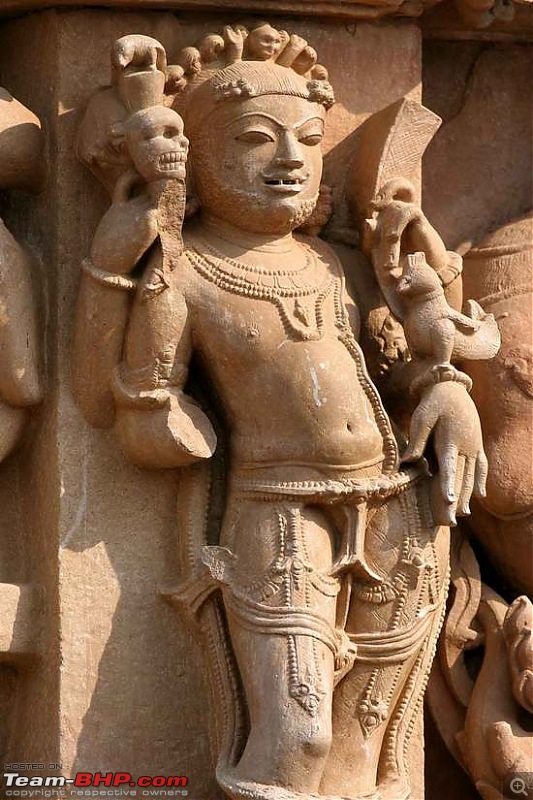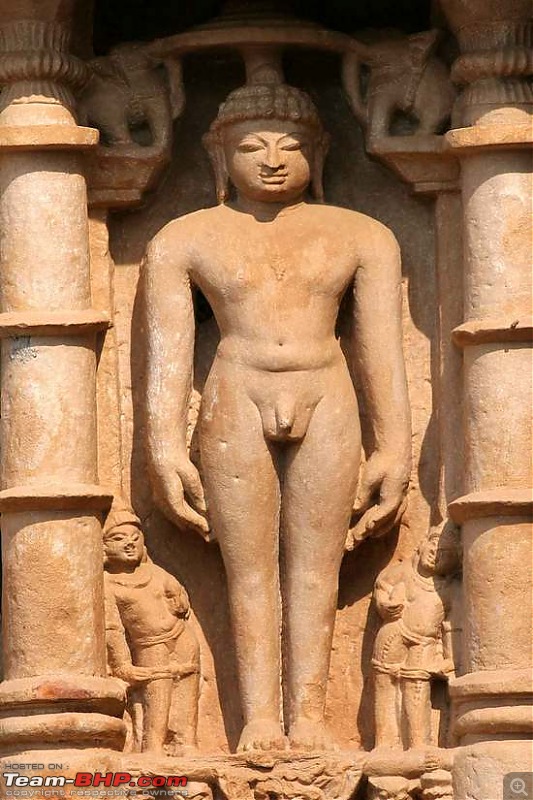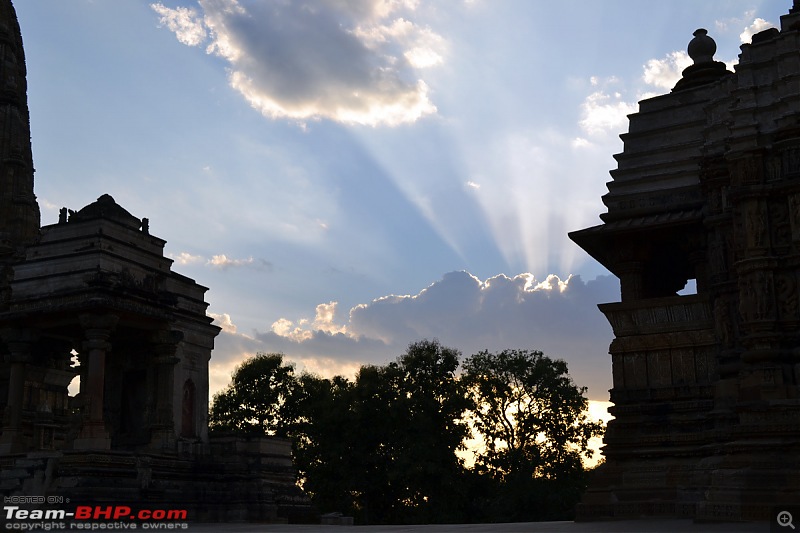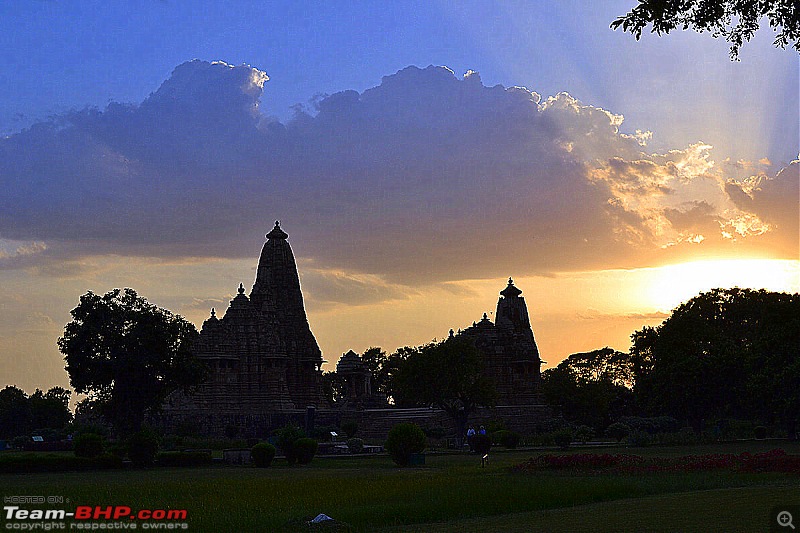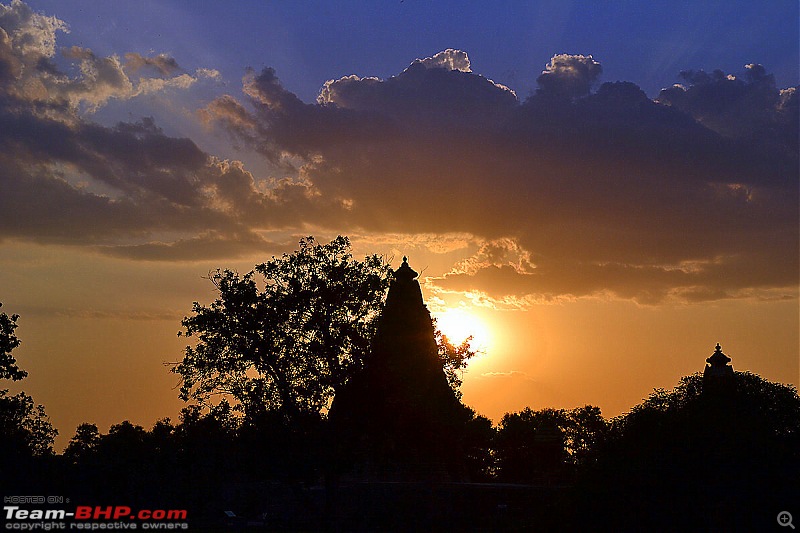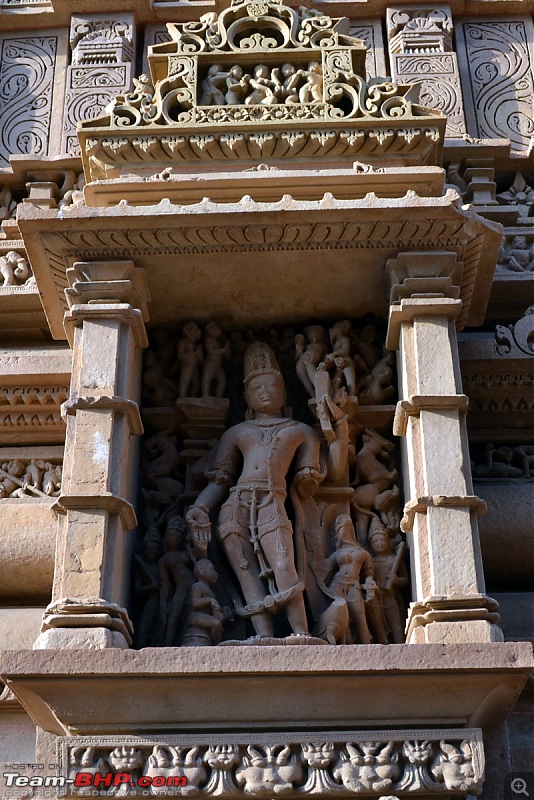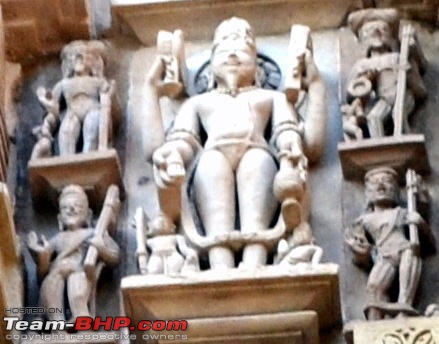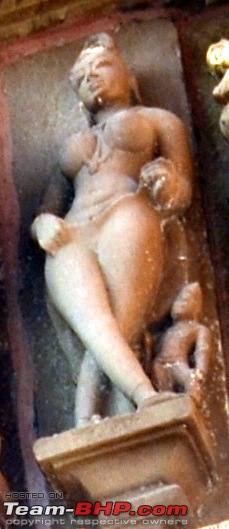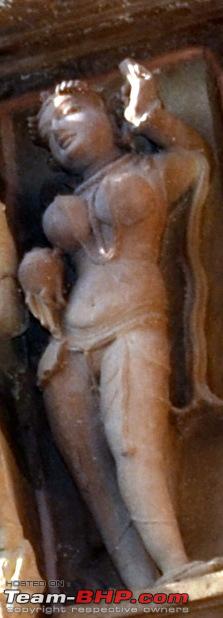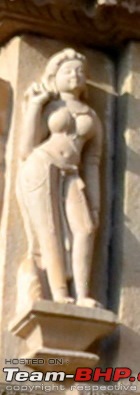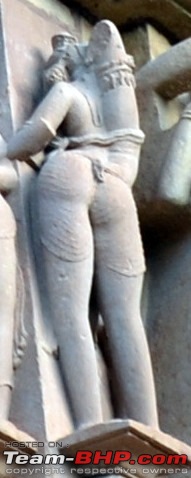Total Distance - 352 KMs
Departure time -6.30 AM (Sagar)
Arrival time - 1 PM (Khajuraho)
Road condition - Mixed
Breaks - Tikamgarh for tea (15 Mins)
Max speed - 130 KMPH on NH 26 (I never crossed this limit throughout the trip)
Best stretches - Sagar - Lalitpur (only on NH 26), Tikamgarh - Chattarpur
Worst - Few KMs after Sagar Town and Tikamgarh Town
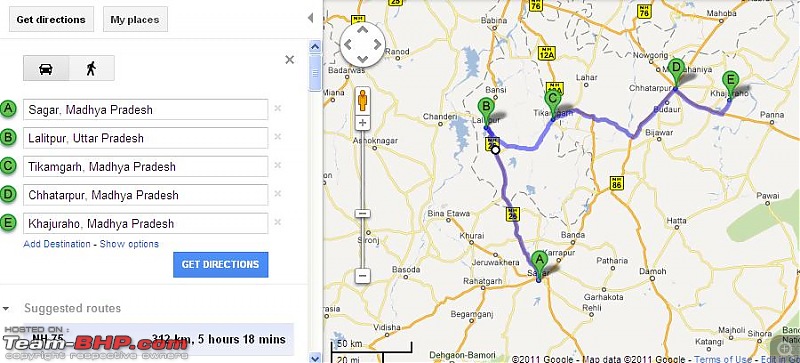
As planned we got up early and hit the road around 6.30 AM. We did not want to go through the hell known as NH 83 and followed the advice by the hotel guy to go via Lalitpur – Tikamgarh. Staying in Alipura Palace was ruled out as we did not want to take a chance of driving back and forth of 65 KMs – the distance between Khajuraho and the hotel. Our plan to stay in Alipura was with an assumption that the road condition will be good. Our experience of driving on NH 83 was good enough to not trust MP roads.
The road from the hotel to bye- pass – a distance of 15 KMs - was horrible. As we neared the bye pass, the small road connecting the high way was still worse. Thanks to Scorpio with good GC we were able to hit the high way.
From now onwards it was a pleasant drive till Lalitpur. The sun was coming out and the cattle were out of their sheds and on to the road. There were hundreds of them on the road and this invariably acted as speed breakers. Add to that the villagers virtually occupy one portion of the highway to dry their produce. I remember J Ravi writing about it in his TL – Leh in Linea – and I am not sure why the authorities have allowed this to happen. There is no traffic on this stretch of road but that does not mean that the villagers have to take over the road.
Cattle moving for their daily routine early in the morning 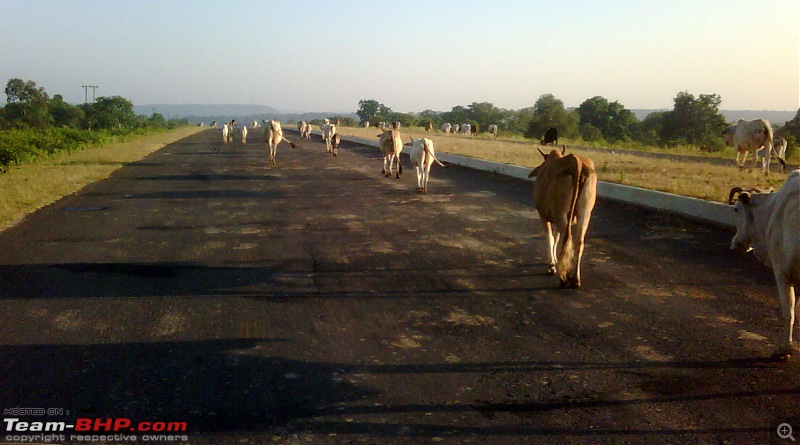 Mounds of farm produce left for drying on the road
Mounds of farm produce left for drying on the road 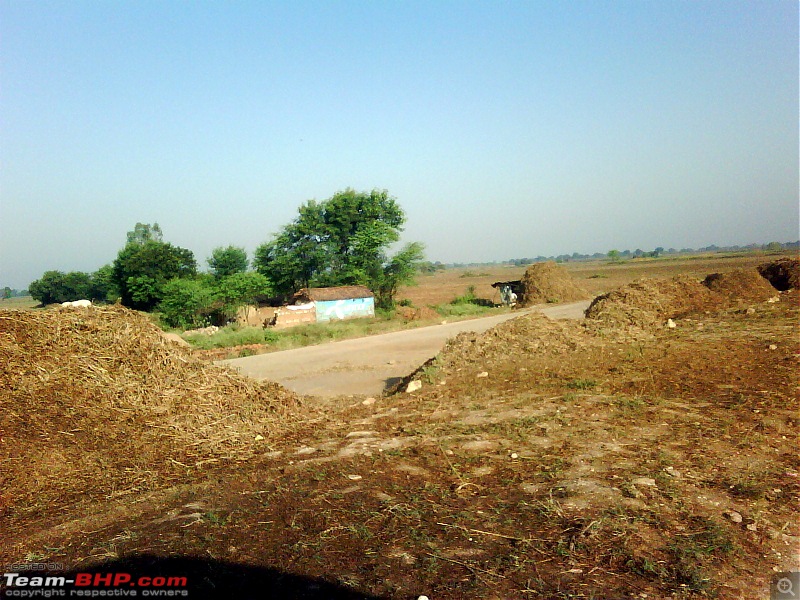
We crossed Tikamgarh and now we were on a single lane road. Damaged in some parts due to rain, it was manageable as there wasn’t much traffic. After fifteen KMs, the road changed into a fantastic two lane road till Chattarpur. The landscape was green – thanks to rain – we crossed many rivers flowing full.
Betwa river 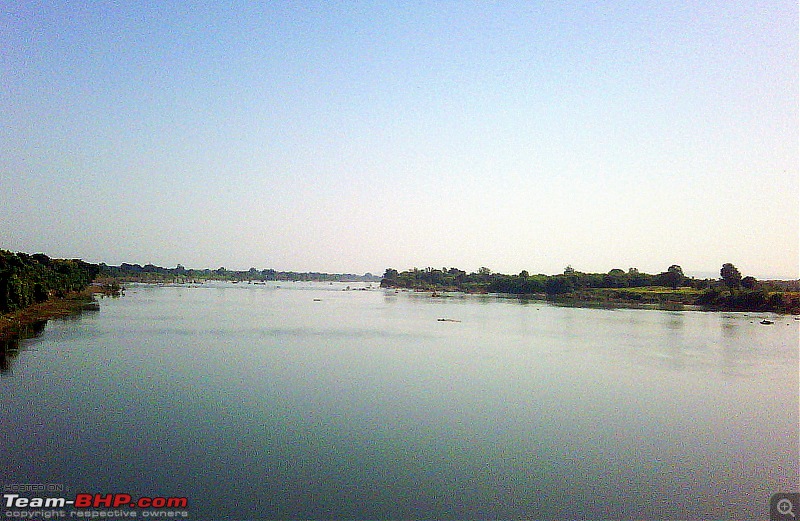
On the way we noticed this beautiful fort in Baldevgarh. It looked lovely with cupolas open to sky reminding the architecture of Mandu. I was not sure what was inside the fort, who was taking care of it. The local said that the fort is still held by the Maharaja of Baldevgarh. I am sure that this would another place to visit in future.
Baldevgarh fort from a distance 
The road from Chattarpur to Khajuraho was getting re-laid and that slowed us down considerably as traffic also increased. We were now used to bad roads and after driving on NH 83, any road looked good. The last fifteen KMs before Khajuraho was an excellent double lane road.
On the previous day, we had called up Taj Chandela and had got good bargain – there seems to be heavy competition amongst the star hotels who want to catch the guests. All major brands except Oberoi and Leela are here. Being start of the season and a week day we were able to strike a good deal. As we checked in, the front office manager had pleasant news. They had upgraded us to a suite!!
The suite was fabulous. We freshened up and came over to the restaurant. Had real good lunch – we had not had breakfast – and the preparation was excellent. A bit of rest, we were ready to leave to see the western temples at 4 PM. It was pretty hot out there even in Oct.
The temple complex is at a distance of 1 KM from the hotel. Khajuraho is a small town. There are three temple complexes in Khajuraho.
a)Western group – the largest and most artistic
b) Eastern group
c) Southern group
Most of the visitors come to see Western group. If one has time one can also visit the other groups as well. We could only visit the western group of temples as it got dark.
When we speak about Khajuraho, first thing that comes to our mind are the erotic sculptures. No doubt, there are. But Khajuraho is much more than that. The temples are massive, sculptures are refined and graceful. I can say it is “Elegance personified”. The most beautiful sculptures in Khajuraho are those of “Sura Sundaris” or “Apsaras”, Gods and Goddesses including dikpalakas and the erotic ones. In between you will find sculptures – specailly around the plinth – depicting the general life of the time and also those of animals. It is just magnificent!!
The erotic sculptures are not gross and emit exuberant grace. The refinement is so good that you can actually see rare sensitivity and warmth of emotion on the face of the loving couples. Though there are many interpretations as to how these sculptures came into being. Whatever is the interpretation of the erotic scenes sculpted on the walls of temples of Khajuraho, there is certainly nothing sordid or coarse about them.
As one of the eminent art historian Krishna Deva says
“The sculptural art of Khajuraho surpasses the medieval school of Orissa in revealing sensuous charms of the human body. Inspired by an ecstatic joy of living and consuming passion for physical beauty, the artists of Khajuraho reveled in admiring human body, displaying it from the most fascinating angles – fine profiles, unusual three quarter profiles and back views. These sculptures are justly famous for their remarkable vitality”
(Quoted in the excellent monograph published by ASI on Khajuraho in association with Eicher which we picked up in Sanchi. ASI has come out with an excellent series of monographs on World heritage sites in the country)
In the words of Louis Frederic, the eminent French historian who has authored an excellent book titled KHAJURAHO with Raghu Rai.
"One is overwhelmed by the number and beauty of the sculptures on the outer walls of the Khajuraho temples. It is curious to see how the artists have composed their works - humans as well as divinities, single or in couples....."
It also reminded me of the famous Kannada poem by the great poet KUVEMPU which he wrote after visiting the World heritage Site of Halebidu in Karnataka
(translated from Kannada by me)
Oh thy visitor Step into this temple with folded hands this is not just "stone" but a fine web of art!
I will now take you through the spell binding spectacle called Khajuraho!!
Let us explore the temples in Western group.....the Grandest.
The layout of the complex 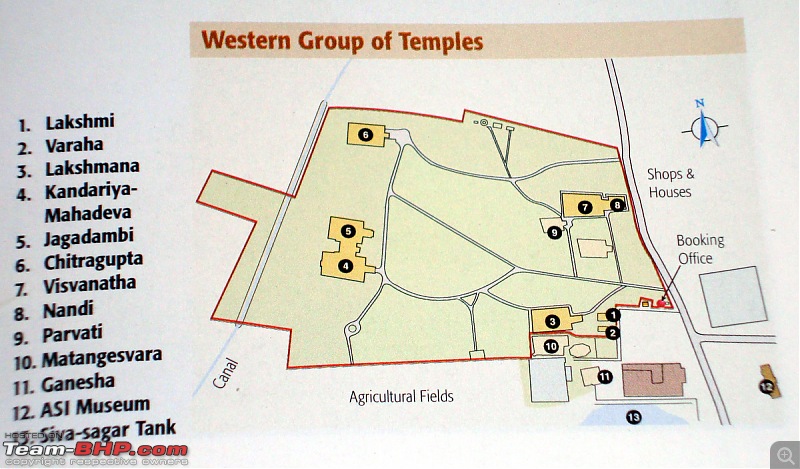 Lakshmana Temple - The first temple in the complex
Lakshmana Temple - The first temple in the complex 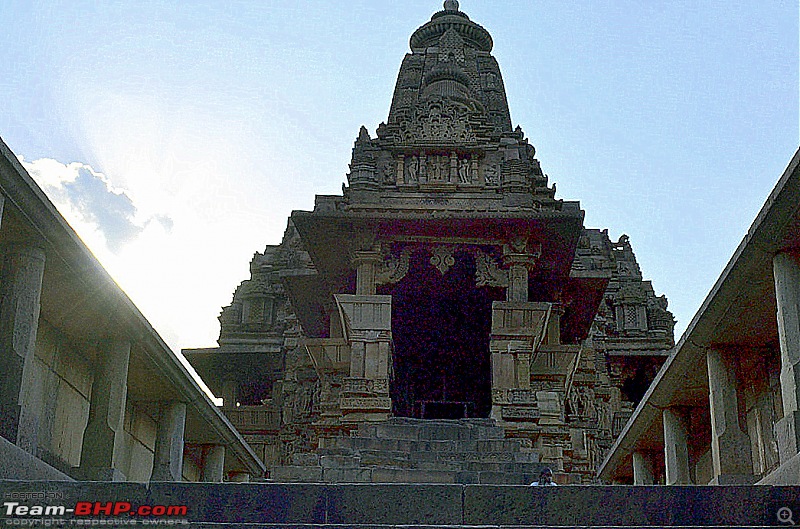 Eastern elevation of Lakshmana temple - Notice the row of elephants at the plinth
Eastern elevation of Lakshmana temple - Notice the row of elephants at the plinth 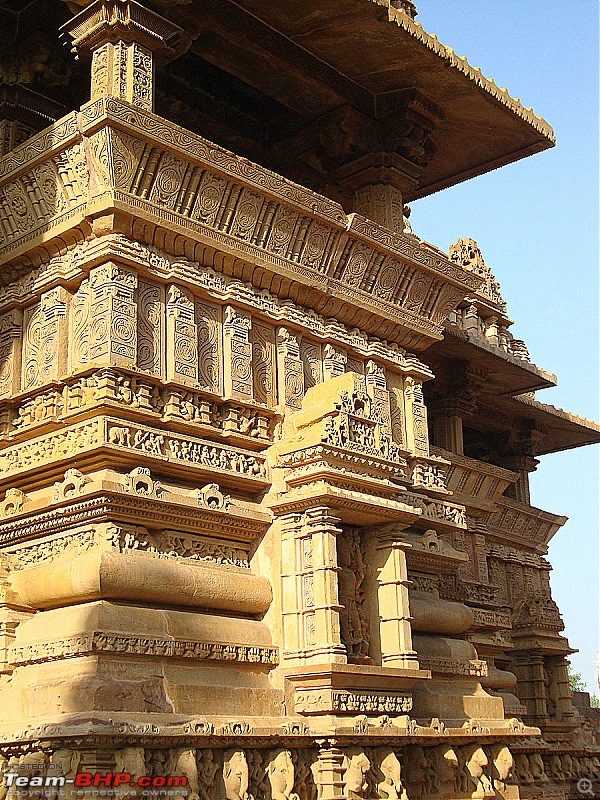 Sculpture on the walls of Lakshmana temple
Sculpture on the walls of Lakshmana temple 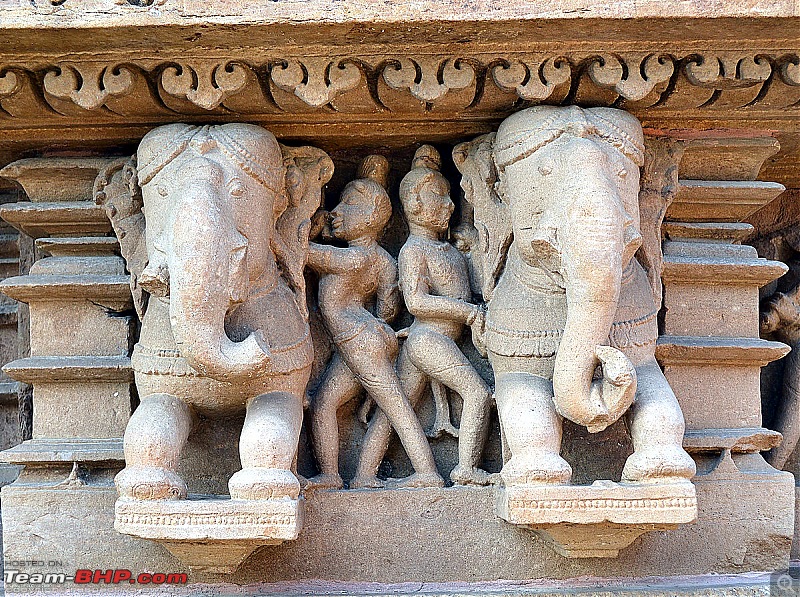 Entrance thorana of Lakshmana temple
Entrance thorana of Lakshmana temple  The staue of Ganesha on the walls of Lakshmana temple
The staue of Ganesha on the walls of Lakshmana temple 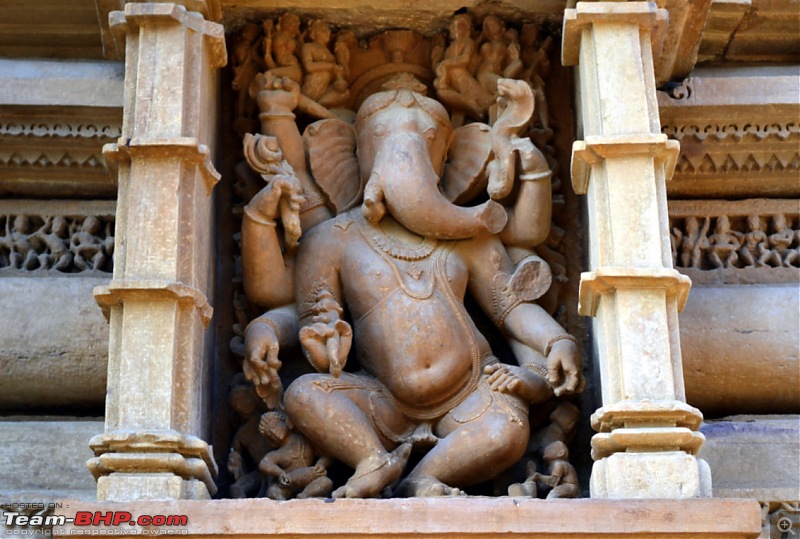 The shikara – tower – of Matangeshwara temple. This is the only living temple.
The shikara – tower – of Matangeshwara temple. This is the only living temple. 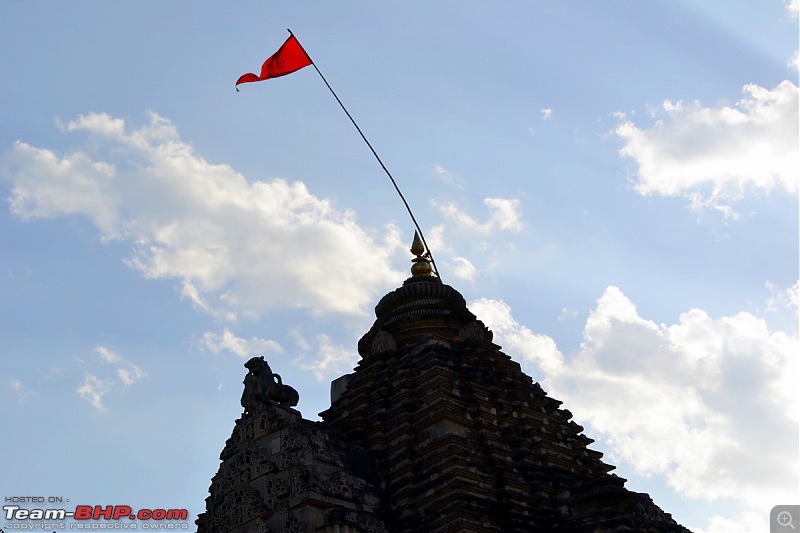 Varaha temple with exquisitely carved massive Varaha
Varaha temple with exquisitely carved massive Varaha 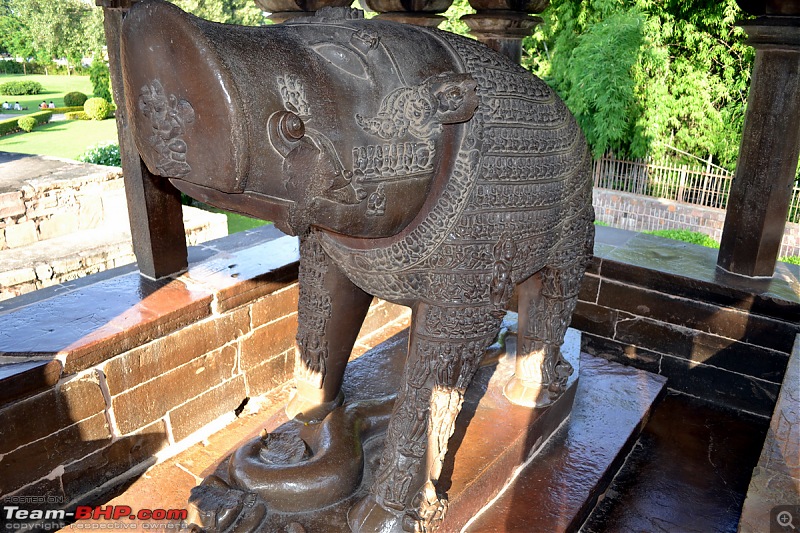 Kandariya Mahadeva temple as seen from Lakshmana temple
Kandariya Mahadeva temple as seen from Lakshmana temple 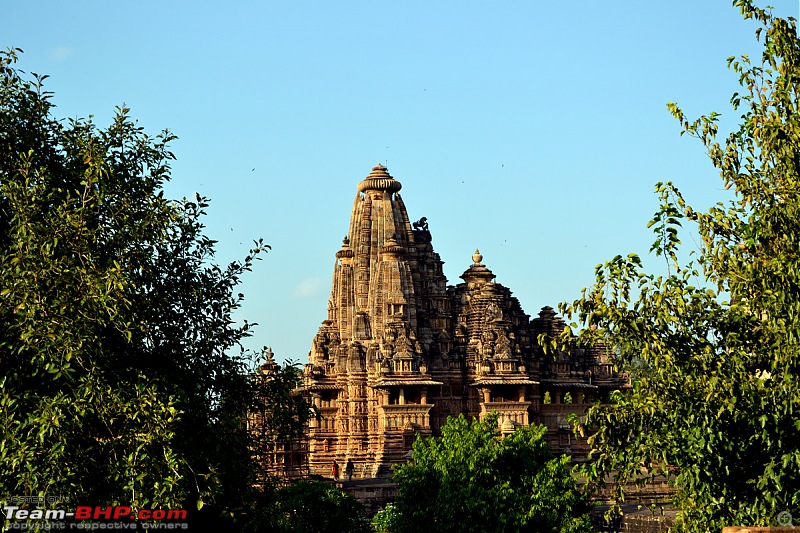 Kandariya Mahadeva and Jagadambika temple complex with a small ruined Shiva shrine in the middle
Kandariya Mahadeva and Jagadambika temple complex with a small ruined Shiva shrine in the middle 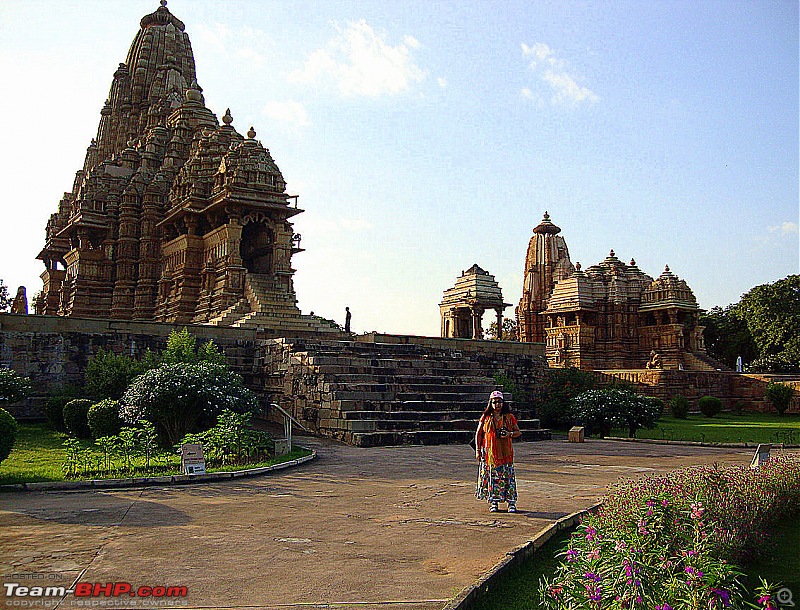 Kandariya Mahadeva temple in full glory
Kandariya Mahadeva temple in full glory 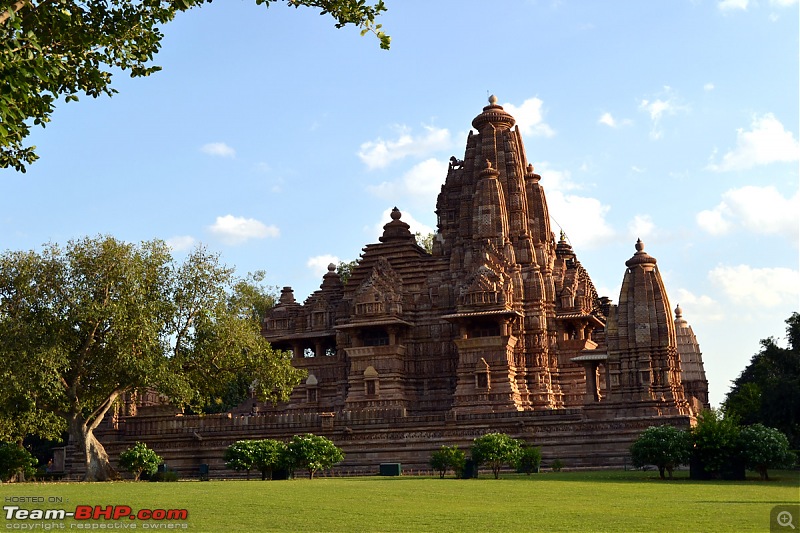 Khandariya Mahadeva temple – the grandest in Khajuraho. Notice the cascading shikaras.
Khandariya Mahadeva temple – the grandest in Khajuraho. Notice the cascading shikaras. 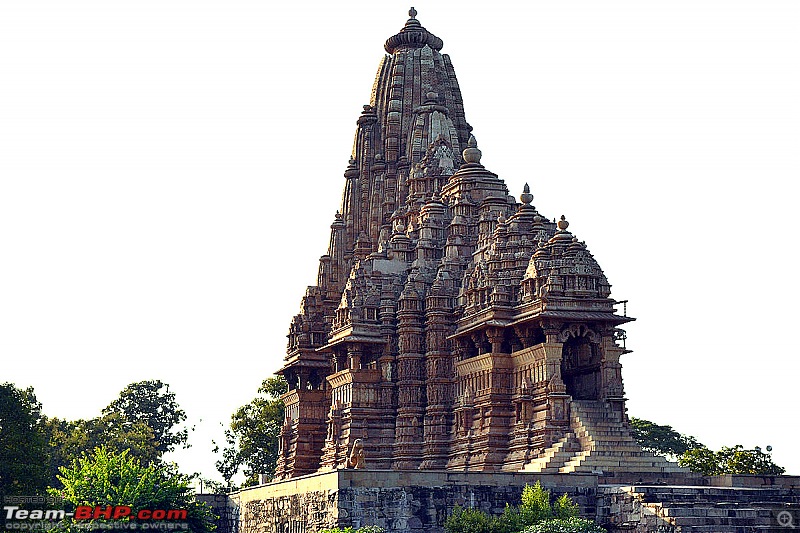 Shiva shrine
Shiva shrine 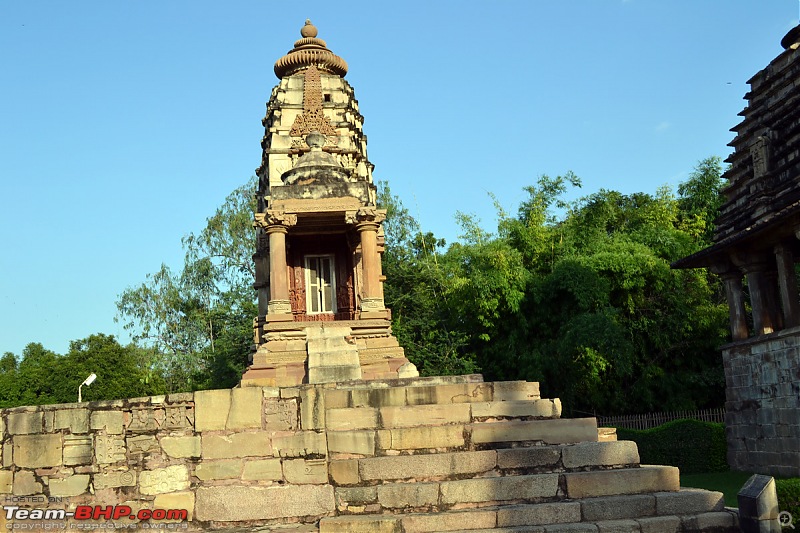 Kandariya Mahadeva temple with Jagadambika temple
Kandariya Mahadeva temple with Jagadambika temple 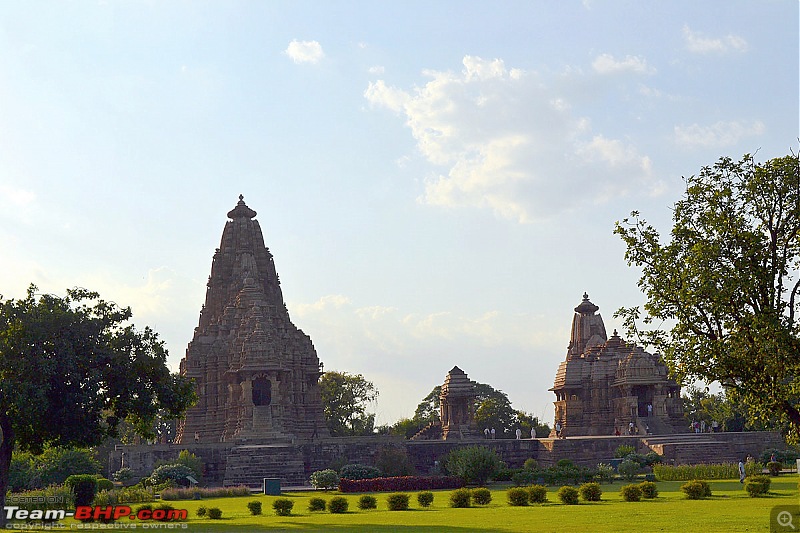 Chitragupta temple
Chitragupta temple 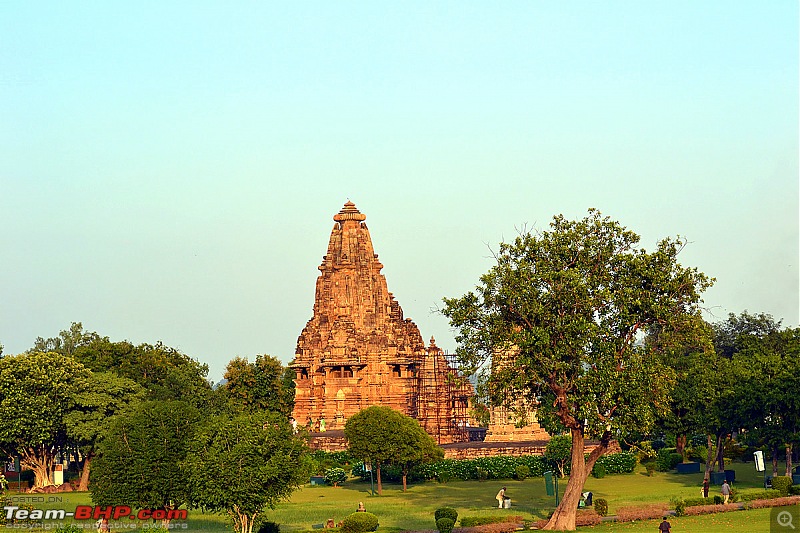 Jagadambika temple with mythical beast in the foreground
Jagadambika temple with mythical beast in the foreground 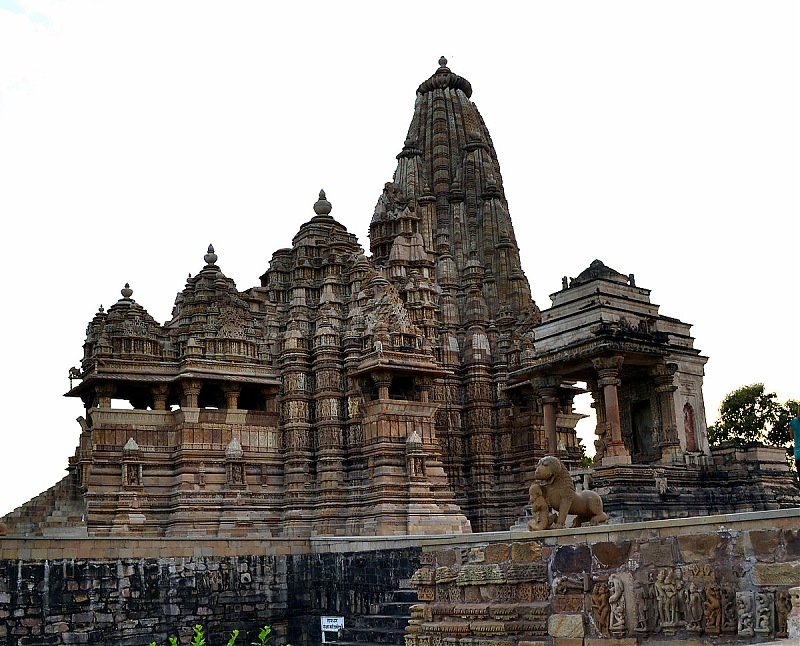 Vishwanatha temple as seen from Chitragupta temple
Vishwanatha temple as seen from Chitragupta temple 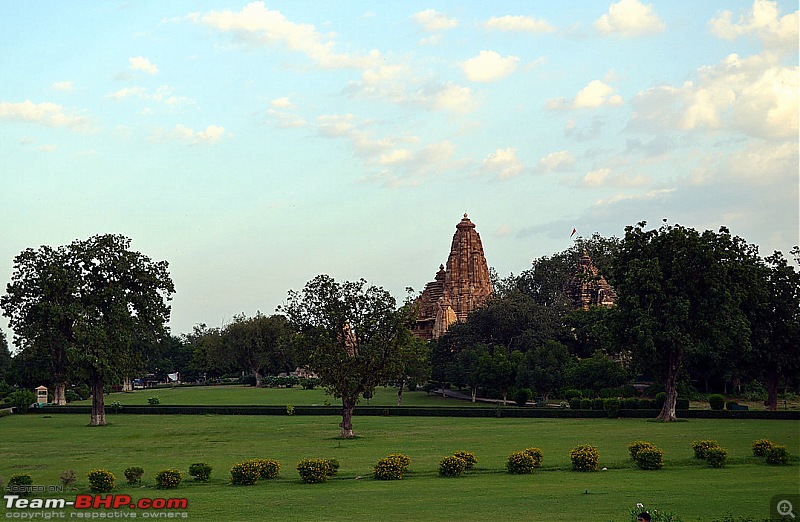 Vishwanatha temple
Vishwanatha temple 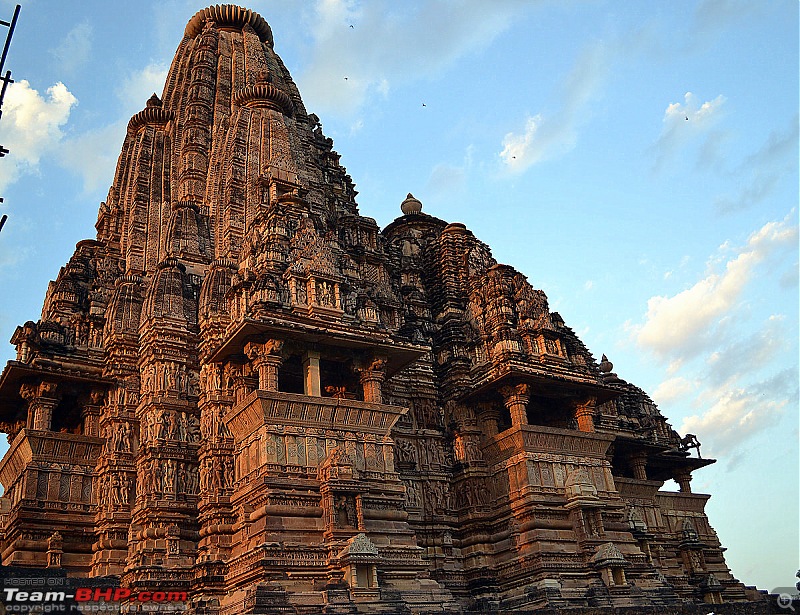 In front of Vishwanatha temple
In front of Vishwanatha temple 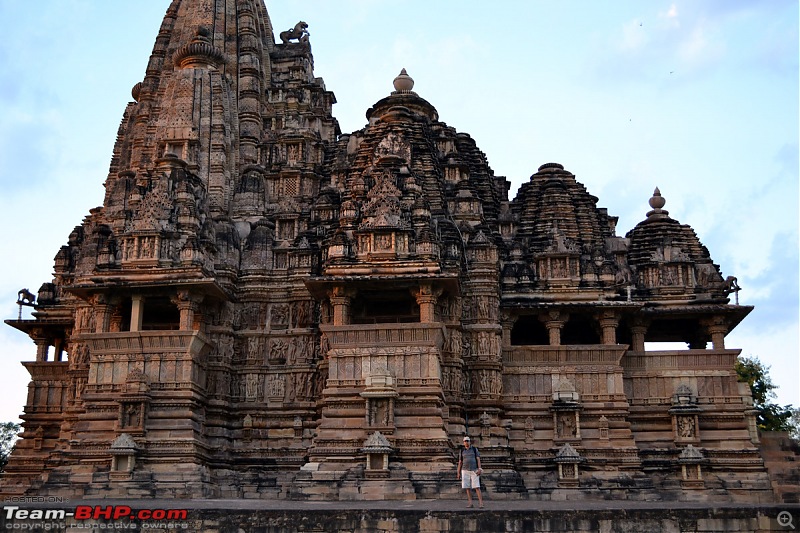 Nandi shrine in front of Vishwanatha temple
Nandi shrine in front of Vishwanatha temple 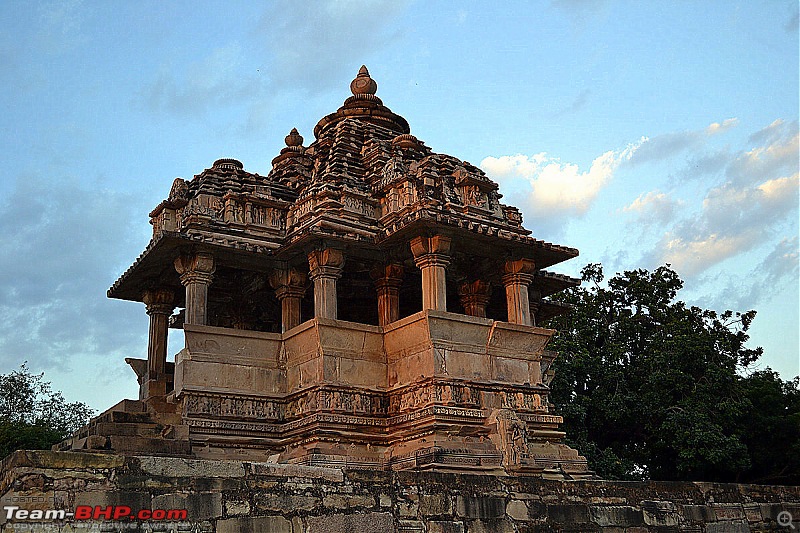 Parvathi shrine
Parvathi shrine 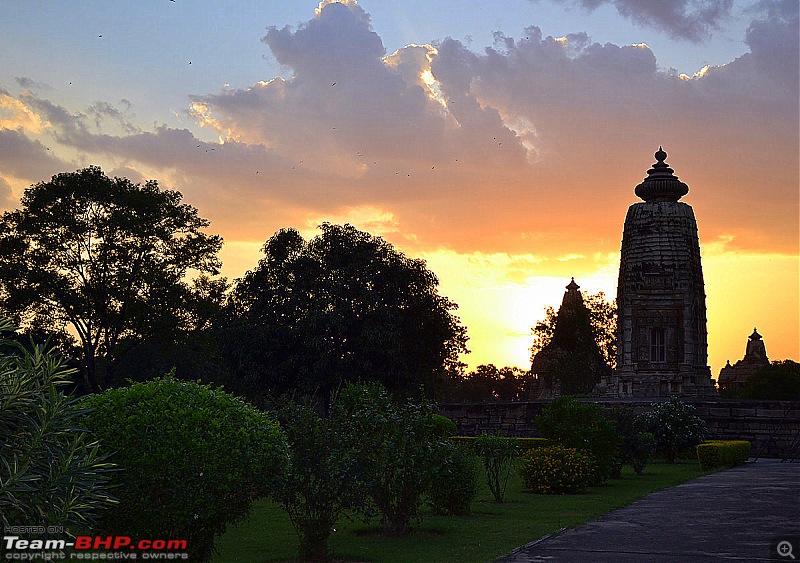 New temple built during the last years
New temple built during the last years 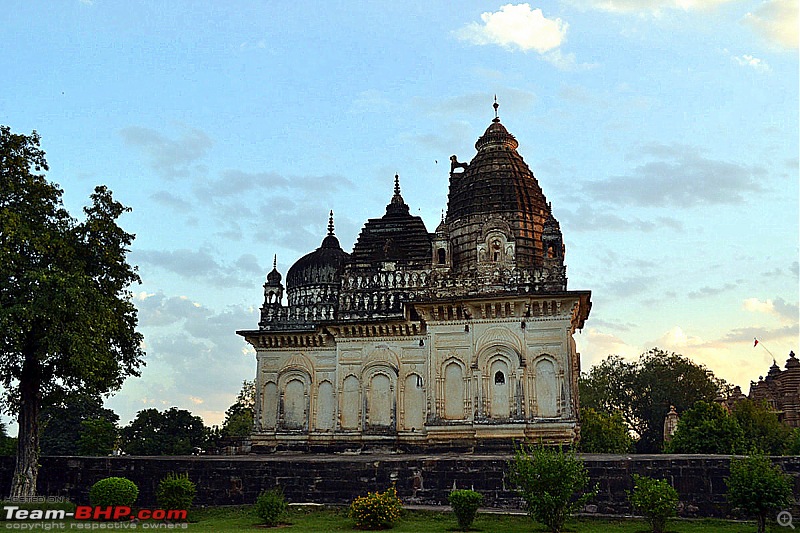 to be continued.....Surasundaris, Apsaras and Kamasutra in stone!!!
to be continued.....Surasundaris, Apsaras and Kamasutra in stone!!! 

 (1)
Thanks
(1)
Thanks
 (1)
Thanks
(1)
Thanks
 (1)
Thanks
(1)
Thanks
 (1)
Thanks
(1)
Thanks






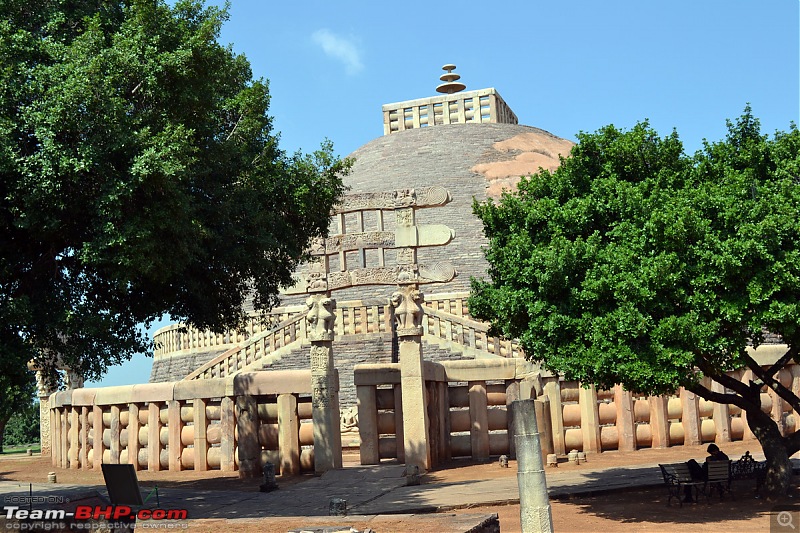
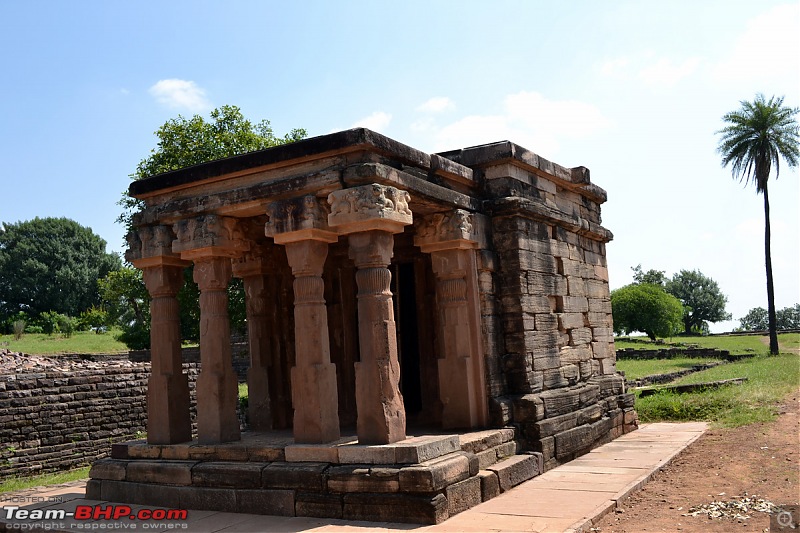

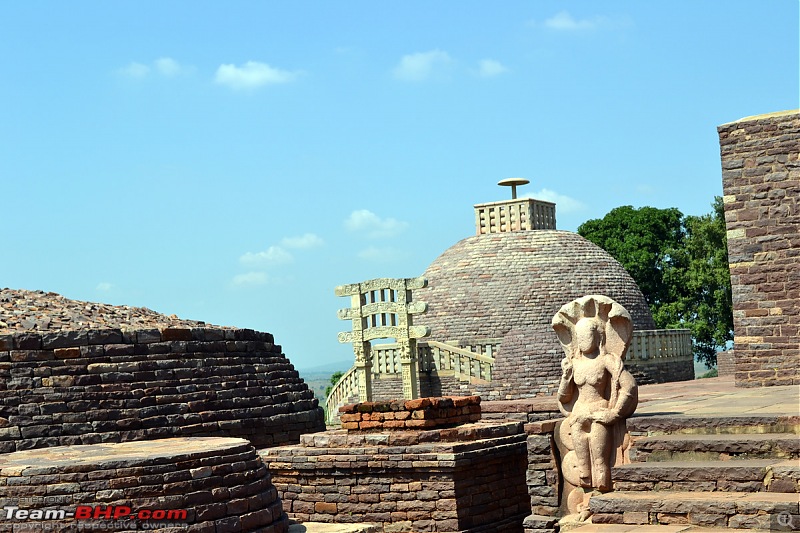
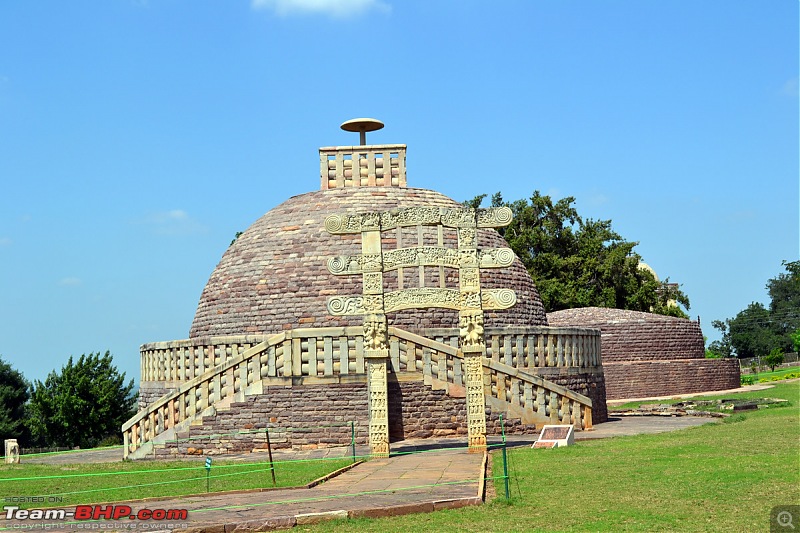
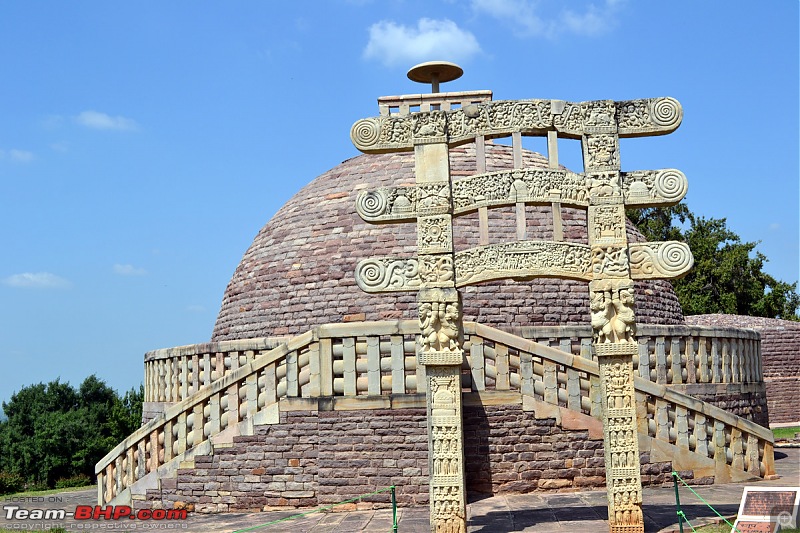
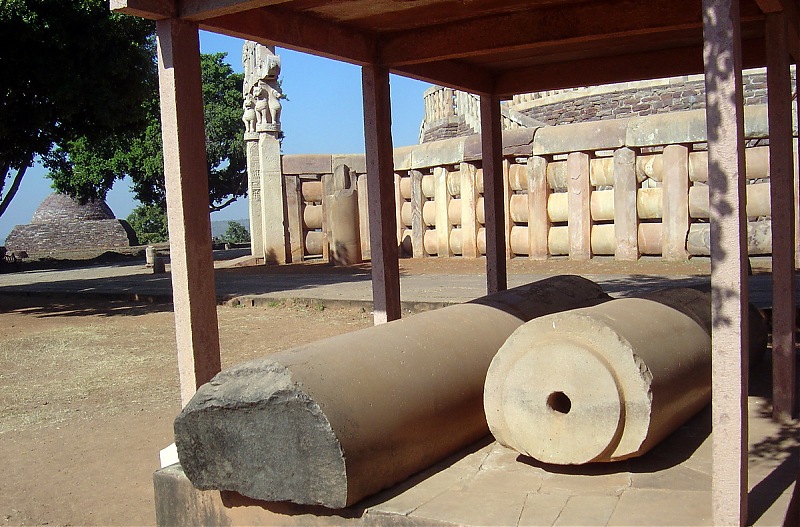
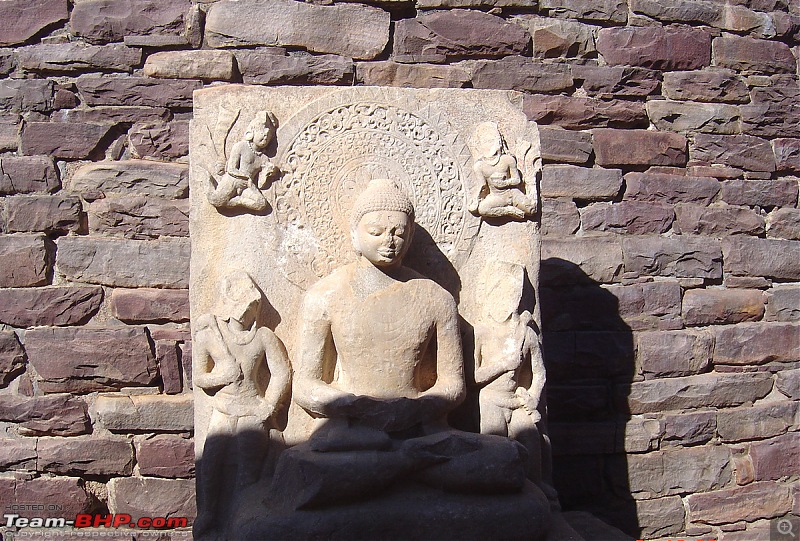
 The museum is fantastic with rare sculptures of Buddha and Ashoka’s lion. We are not allowed to take pictures. The sculptural heritage of this country is so phenomenal it fills you with lot of pride. One can also see gradual the refinement of these sculptures from Gupta - Ashoka times of 3rd century BC to Chalukya/Pallavas of 6-7th century to medieval times of 12-15th century of which Khajuraho in the north, Belur-Halebidu-Hampi in the south along with Chola temples.
The museum is fantastic with rare sculptures of Buddha and Ashoka’s lion. We are not allowed to take pictures. The sculptural heritage of this country is so phenomenal it fills you with lot of pride. One can also see gradual the refinement of these sculptures from Gupta - Ashoka times of 3rd century BC to Chalukya/Pallavas of 6-7th century to medieval times of 12-15th century of which Khajuraho in the north, Belur-Halebidu-Hampi in the south along with Chola temples. 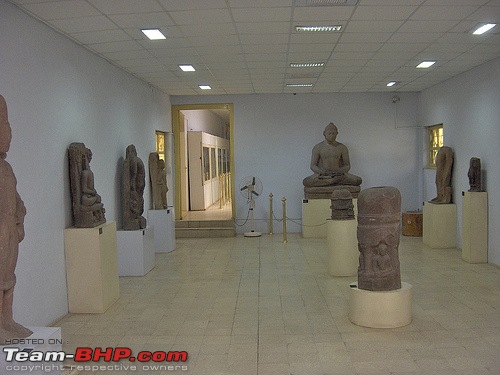
 . The pathetic road also ensured that we don't dare visit monuments at Gyraspur.
. The pathetic road also ensured that we don't dare visit monuments at Gyraspur.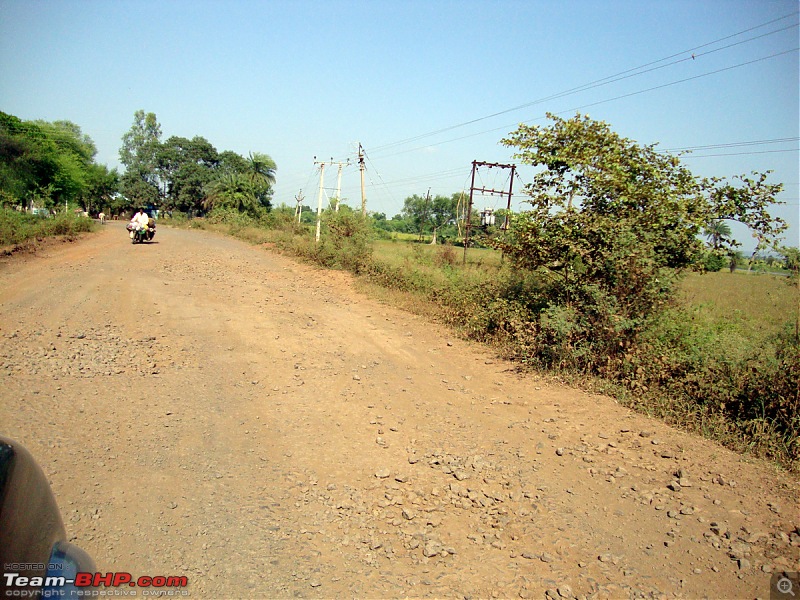
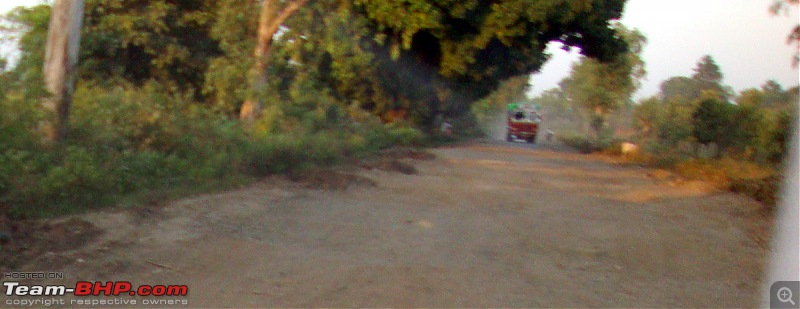
 My guess comes right and bed bugs had a ball in the night at the cost of our sleep!!
My guess comes right and bed bugs had a ball in the night at the cost of our sleep!!


























